
The Australian Maritime Safety Authority makes this heritage management plan under section 341S of the Environment Protection and Biodiversity Conservation Act 1999 (Cth) for Cape Leeuwin Lighthouse.
23 June 2022
Mick Kinley
Chief Executive Officer
Copyright
© Australian Maritime Safety Authority
The Australian Maritime Safety Authority encourages the dissemination and exchange of information provided in this publication.
Except as otherwise specified, all material presented in this publication is provided under Creative Commons Attribution 4.0 International licence. This excludes:
- the Commonwealth Coat of Arms
- this department's logo
- content supplied by third parties.
The Creative Commons Attribution 4.0 International Licence is a standard form licence agreement that allows you to copy, distribute, transmit and adapt this publication provided that you attribute the work. The details of the version 4.0 of the licence are available on the Creative Commons website, as is the full legal code for that licence.
Third Party Copyright
Some material in this document, made available under the Creative Commons Licence framework, may be derived from material supplied by third parties. The Australian Maritime Safety Authority has made all reasonable efforts to identify content supplied by third parties using the following format ‘© [name of third party]’ or ‘Source: [name of third party]’. Permission may need to be obtained from third parties to re-use their material.
Acknowledgements
The Australian Maritime Safety Authority acknowledges that the lighthouse is located within traditional Country.
Contact
Comments or questions regarding this document should be addressed to:
The Australian Maritime Safety Authority,
Manager Asset Management and Preparedness,
PO Box 10790,
Adelaide Street, Brisbane QLD 4000
Phone: (02) 6279 5000 (switchboard)
Email: Heritage@amsa.gov.au
Website: www.amsa.gov.au
Attribution
AMSA’s preference is that you attribute this publication (and any material sourced from it) using the following wording:
Source: Australian Maritime Safety Authority Cape Leeuwin Lighthouse Heritage Management Plan – 2022
Front cover image
Figure 1. Cape Leeuwin Lighthouse (© AMSA, 2017)
More information
For enquiries regarding copyright including requests to use material in a way that is beyond the scope of the terms of use that apply to it, please contact us through our website: www.amsa.gov.au

Cape Leeuwin Lighthouse
Heritage Management Plan
2022
Table of Contents
Executive summary
1. Introduction
1.1 Background and purpose
1.2 Heritage management plan objectives
1.3 Methodology
1.4 Status
1.5 Authorship
1.6 Acknowledgements
1.7 Language
1.8 Previous reports
1.9 Sources of information and images
2. Cape Leeuwin Lightstation site
2.1 Location
2.2 Setting and landscape
2.3 Lease and ownership
2.4 Listings
2.5 Access
3. History
3.1 General History of lighthouses in Australia
3.2 The Commonwealth Lighthouse Service
3.3 Western Australian lighthouse administration
3.4 Cape Leeuwin: a history
3.5 Planning a lighthouse
3.6 Lighthouse keepers
3.7 Chronology of major events
3.8 Changes and conservation over time
3.9 Summary of current and former uses
3.10 Summary of past and present community associations
3.11 Unresolved questions or historical conflicts
3.12 Recommendations for further research
4. Fabric
4.1 Fabric register
4.2 Related objects and associated AMSA artefacts
4.3 Comparative analysis
5. Heritage significance
5.1 Commonwealth heritage listing – Cape Leeuwin Lighthouse
5.2 WA State heritage register – Cape Leeuwin Lightstation
5.3 Condition and integrity of the Commonwealth heritage values
5.4 Gain/loss of heritage values
6. Opportunities and constraints
6.1 Implications arising from significance
6.2 Framework: sensitivity to change
6.3 Statutory and legislative requirements
6.4 Operational requirements and occupier needs
6.5 Proposals for change
6.6 Potential pressures
6.7 Process for decision-making
7. Conservation management principles and policies
8. Policy implementation plan
8.1 Plan and schedule
8.2 Monitoring and reporting
Appendices
Appendix 1. Glossary of heritage conservation terms
Appendix 2. Glossary of historic lighthouse terms relevant to Cape Leeuwin Lighthouse
Appendix 3. Cape Leeuwin light details
Appendix 4. Table demonstrating compliance with the EPBC Regulations
Reference List
End notes
List of Figures
Figure 1. Cape Leeuwin Lighthouse (© AMSA, 2017)
Figure 2. Cape Leeuwin Lighthouse, Western Australia (© AMSA, 2017)
Figure 3. Planning process applied for heritage management (Source: Australia ICOMOS, 1999)
Figure 4. Location of Cape Leeuwin Lighthouse (Map data: © 2021 Google, TerraMetrics)
Figure 5. View of lightstation from Cape Leeuwin Lighthouse tower (© AMSA, 2017)
Figure 6. AMSA Cape Leeuwin Map of Lease, 2018 (Source: Esri, DigitalGlobe, GeoEye, Earthstar Geographics, CNES/Airbus DS, USDA, USGA, AeroGRID, IGN, and the GIS User Community)
Figure 7. View of access road, Cape Leeuwin Lighthouse (© AMSA, 2018)
Figure 8. Incandescent oil vapour lamp by Chance Brothers (Source: AMSA)
Figure 9. Dioptric lens on display at Narooma (Source: AMSA)
Figure 10. Dalén’s system – sunvalve, mixer, and flasher (Source: AMSA)
Figure 11. Cape Leeuwin Lighthouse drawing. Image courtesy of the National Archives of Australia, NAA: K1371, WN0103601 (© Commonwealth of Australia, National Archives of Australia)
Figure 12. Cape Leeuwin Lighthouse 1st Order Chance Brothers Lens. Image courtesy of the National Archives of Australia, NAA: A9568, 7/10/6 (© Commonwealth of Australia, National Archives of Australia)
Figure 13. View of Wadjemup (Rottnest Island) Lighthouse (© AMSA, 2017)
Figure 14. View of Cape Leeuwin Lighthouse (© AMSA, 2010)
Figure 15. Wadjemup (Rottnest Island) Lighthouse drawing 1884-85. Image courtesy of the National Archives of Australia, NAA: K1372, WN0101401 (© Commonwealth of Australia, National Archives of Australia)
Figure 16. Repainting Cape Leeuwin Lighthouse (© AMSA, 2002)
Executive Summary
Placed on the Commonwealth Heritage List in 2004, Cape Leeuwin Lightstation contributed to the establishment of marine Aids to Navigation (AtoN) along the Western Australian coastline. The lighthouse is known for its original lens array and mercury bath system, aesthetics, and its inherent characteristics of a late nineteenth century lighthouse complex.
Cape Leeuwin Lighthouse was listed on the Western Australia state heritage database in 2005 for its aesthetic, historic, scientific and social value, in addition to its significant rarity and representation.
Built in 1896, the lightstation is situated approximately nine kilometres south of Augusta along the Australian south-west coast. The lightstation comprises of a lighthouse tower, three keepers’ cottages, an education centre/office, staffroom and store shed. The larger part of the lightstation is managed by the Western Australian Department of Biodiversity, Conservation and Attractions (DBCA). The lightstation is open to visitors all year.
Although the lighthouse remains fitted with its original lens array and mercury float pedestal, it now operates on an automated mechanism as part of AMSA’s network of AtoNs. The equipment is serviced by AMSA’s maintenance contractor who visits at least twice each year. AMSA officers visit on an ad hoc basis for auditing, project and community liaison purposes.
This heritage management plan concerns the lighthouse, however it also addresses the management of the surrounding precinct and land. The plan is intended to guide AMSA’s decisions and actions. AMSA has prepared this plan to integrate the heritage values of the lightstation in accordance with the Environment Protection and Biodiversity Conservation Act 1999 (Cth) (EPBC Act), and the Environment Protection and Biodiversity Conservation Regulations 2000 (Cth) (EPBC Regulations).
Well-built and generally well-maintained, the lighthouse precinct is in relatively good, stable condition. The policies and management guidelines set out in this heritage management plan strive to ensure the Commonwealth heritage values of Cape Leeuwin Lightstation are recognised, maintained and preserved for future generations.
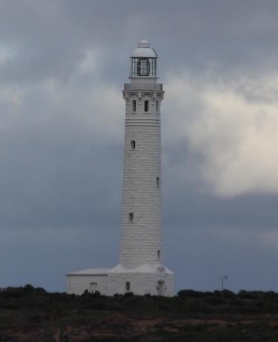 Figure 2. Cape Leeuwin Lighthouse, Western Australia (© AMSA, 2017)
Figure 2. Cape Leeuwin Lighthouse, Western Australia (© AMSA, 2017)

1. Introduction
1.1 Background and purpose
The Australian Maritime Safety Authority (AMSA) is the Commonwealth agency responsible for coastal AtoN. AMSA’s network includes the Cape Leeuwin Lighthouse, built by the Western Australian State Government in 1896.
Section 341S of the Environment Protection and Biodiversity Conservation Act 1999 (Cth) (EPBC Act) requires AMSA to prepare a management plan for Cape Leeuwin Lighthouse that addresses the matters prescribed in Schedules 7A and 7B of the Environment Protection and Biodiversity Conservation Regulations 2000 (Cth) (EPBC Regulations). The principal features of this management plan are:
- a description of the place, its heritage values, their condition and the method used to assess its significance
• an administrative management framework
• a description of any proposals for change
• an array of conservation policies that protect and manage the place
• an implementation plan
• ways the policies will be monitored and how the management plan will be reviewed.
AMSA has prepared this heritage management plan to guide the future conservation of the place. This plan provides the framework and basis for the conservation and best practice management of the Cape Leeuwin Lighthouse in recognition of its heritage values. The policies in this plan indicate the objectives for identification, protection, conservation and presentation of the commonwealth heritage values of the place. Figure 3 shows the basic planning process applied.

Figure 3. Planning process applied for heritage management (Source: Australia ICOMOS, 1999)
1.2 Heritage management plan objectives
The objectives of this heritage management plan are to:
- protect, conserve and manage the Commonwealth heritage values of the Cape Leeuwin Lighthouse;
- interpret and promote the Commonwealth heritage values of the Cape Leeuwin Lightstation;
- manage use of the lighthouse; and use best practice standards, including ongoing technical and community input, and apply best available knowledge and expertise when considering actions likely to have a substantial impact on Commonwealth heritage values.
In undertaking these objectives, this plan aims to:
- Provide for the protection and conservation of the heritage values of the place while minimising any impacts on the environment by applying the relevant environmental management requirements in a manner consistent with Commonwealth heritage management principles.
- Take into account the significance of the surrounding region as a cultural landscape occupied by Aboriginal people over many thousands of years.
- Recognise that the site has been occupied by lease holders since the early 20th century.
- Encourage site use that is compatible with the historical fabric, infrastructure and general environment.
- Record and document maintenance works, and changes to the fabric, in the Cape Leeuwin Lighthouse fabric register (see Section 4).
The organisational planning cycle and associated budgeting process is used to confirm requirements, allocate funding, and manage delivery of maintenance activities. Detailed planning for the aids to navigation network is managed through AMSA’s internal planning processes.
An interactive map showing many of AMSA’s heritage sites, including Cape Leeuwin, can be found on AMSA’s Interactive Lighthouse Map[i].
1.3 Methodology
The methodology used in the preparation of this plan is consistent with the recommendations of The Burra Charter and with the requirements of Chapter 5, Part 15 Division 1A of the EPBC Act. In particular, the plan:
- details the history of the site based on information sourced from archival research, expert knowledge and documentary resources.
- provides a description of the site based on information sourced from site inspection reports and fabric registers.
- details the Commonwealth heritage criterions satisfied by Cape Leeuwin Lighthouse as set out by the EPBC Regulations.
The criterion set out at Schedule 7A (h) (i-xiii) informed the development of the required policies for the management of the Cape Leeuwin Lighthouse, in conjunction with input from the Department of Agriculture, Water and the Environment on best practice management.
Consultation
In the preparation of the plan, AMSA consulted with the Department of Biodiversity, Conservation and Attractions, Shire of Augusta Margaret River (AMR Shire), and the Margaret River Busselton Tourism Inc. These groups provided valuable information on the management of the larger lightstation, fauna and flora in the vicinity of the lighthouse, and processes relating to site-use.
AMSA initiated contact with the Undalup Association Inc. and the South West Aboriginal Land and Sea Council (SWALSC) under the direction of Department of Planning, Lands and Heritage (Aboriginal Heritage, WA) and AMR Shire in preparation of the plan. As of yet, no response has been received. Future versions of the plan will include an update on this consultation progress.
The plan was advertised within The Australian newspaper, and on AMSA’s external website in June 2020, and the general public were invited to provide feedback in accordance with the EPBC Regulations. Comments received were incorporated within the plan.
AMSA submitted the draft plan to the Heritage Branch of the Department of Agriculture, Water and the Environment who provided feedback on the draft. These comments were incorporated into the final document.
The draft plan was submitted to the Australian Heritage Council and was endorsed by the Minister for the Environment on 23 March 2022.
1.4 Status
This plan has been adopted by AMSA in accordance with Schedule 7A (Management plans for Commonwealth Heritage places) and Schedule 7B (Commonwealth Heritage management principles) of the EPBC Regulations to guide the management of the place and for inclusion in the Federal Register of Legislative Instruments.
1.5 Authorship
This plan has been prepared by AMSA. At the initial time of publication, the Australian Maritime Systems Group (AMSG) is the contracted maintenance provider for the Commonwealth Government’s AtoN network including the Cape Leeuwin Lighthouse.
1.6 Acknowledgements
AMSA acknowledges the professional assistance of the Department of Biodiversity, Conservation and Attractions (WA), Shire of Augusta Margaret River (AMR Shire), the Margaret River Busselton Tourism Inc., and Aboriginal Heritage (WA).
1.7 Language
For clarity and consistency, some words in this plan, such as restoration, reconstruction, and preservation, are used with the meanings defined in the Burra Charter[ii]. (See Appendix 1. Glossary of Heritage Conservation Terms).
Also see Appendix 2. Glossary of lighthouse terminology relevant to Cape Leeuwin which sets out the technical terminology used in this plan.
1.8 Previous reports
A Conservation Plan was produced by Danvers Architects for AMSA in 1992.
A Heritage Lighthouse Report was produced by Peter Marquis-Kyle (and reviewed by AMSG) for AMSA in 2007.
A Heritage Asset Condition Report 4th Revision was produced by AMSG in 2020 for AMSA.
1.9 Sources of information and images
This plan has used a number of sources of information. This includes the National Archives of Australia (NAA), the National Library of Australia (NLA) and AMSA’s heritage collection.

2. Cape Leeuwin Lightstation Site
2.1 Location
Cape Leeuwin Lightstation is located on Cape Leeuwin (Doogalup) in Western Australia – approximately six miles (9.65 km) south of the township of Augusta, and approximately 11 miles (17.7 kilometres) south of Hamelin Bay.
Coordinates: 34º 22.4900’ S, 115º 08.1800’ E
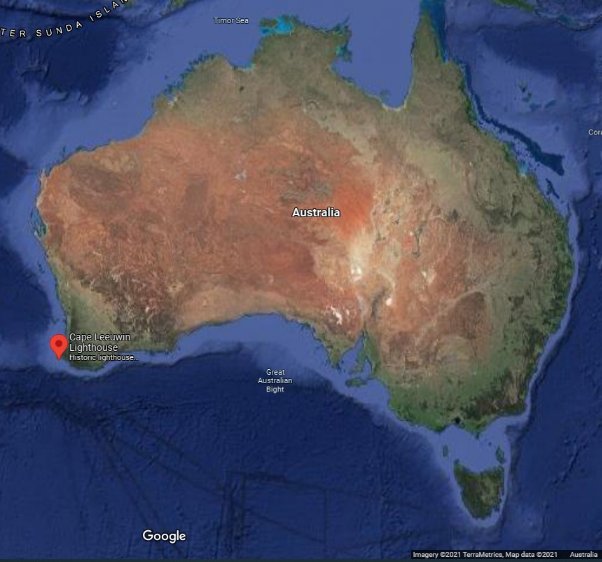
Figure 4. Location of Cape Leeuwin Lighthouse (Map data: © 2021 Google, TerraMetrics)
2.2 Setting and landscape
Situated within the Leeuwin-Naturaliste National Park, the lightstation is located on Cape Leeuwin (Doogalup), a bare, low-lying bluff considered the most south-westerly point of Australia. Owing to the forcefulness of the south westerlies, vegetation is limited on the cape (low shrubs and ground covers). A collection of islands and rocks extend from the cape and the nearest settlement is Augusta (est. 1830).
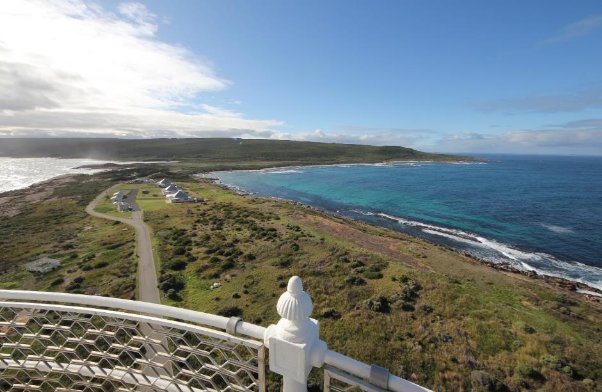
Figure 5. View of lightstation from Cape Leeuwin Lighthouse tower (© AMSA, 2017)
Fauna and flora
Situated within Leeuwin-Naturaliste National Park, the larger Cape Leeuwin (Doogalup) region is abundant in native flora and fauna. Taken from the Leeuwin-Naturaliste management plan (2015)[iii], the following species data has been sourced from faunal surveys taken within the national park:
- 29 mammal species (including 4 species of bat)
- 128 bird species
- 11 frog species
- 33 reptile species
- 9 fish species
- 54 invertebrate species
The following faunal species have been listed as threatened:
- quokka (Setonix brachyurus)
- western quoll (Dasyurus geoffroii)
- brush-tailed phascogale (Phascogale tapoatafa)
- western ringtail possum (Pseudocheirus occidentalis)
- forest red-tailed black cockatoo (Calyptorhynchus banksia naso)
- Baudin’s cocktatoo (C. baudinii)
- Carnaby’s cockatoo (C. latirostris)
- Hutton’s shearwater (Puffinus huttoni)
- Australasian bittern (Botaurus poiciloptilus)
- white-bellied frog (Geocrinia alba)
- Balston’s pygmy perch (Nannatherina balstoni)
- western mud minnow (Galaxiella munda)
- Cape Leeuwin freshwater snail (Austroassiminea letha)
- Margaret River marron or hairy marron (Cherax tenuimanus)
- Dunsborough borrowing crayfish (Engaewa reducta)
The Leeuwin-Naturaliste National Park contains 1,577 native flora species of 198 families. The following floral species have been listed as rare under the Biodiversity Conservation Act 2016 (WA):
- Banksia nivea
- Scott River boronia (Boronia exilis)
- Caladenia excels
- Caladenia lodgeana
- Dunsborough spider orchid (Caladenia viridescens)
- Ironstone darwinia (Darwinia ferricola)
- Eucalyptus phylacis
- Grevillea brachstylis
- Augusta kennedia (Kennedia lateritia)
- Lambertia orbifolia
- Naturaliste nancy (Wurmbea calcicola)
- Diel’s currant bush (Leptomeria dielsiana)
The Leeuwin-Naturaliste Capes Area Parks and Reserves Management Plan 81 was released in 2015 and contains further information on the biodiversity of the region.[iv]
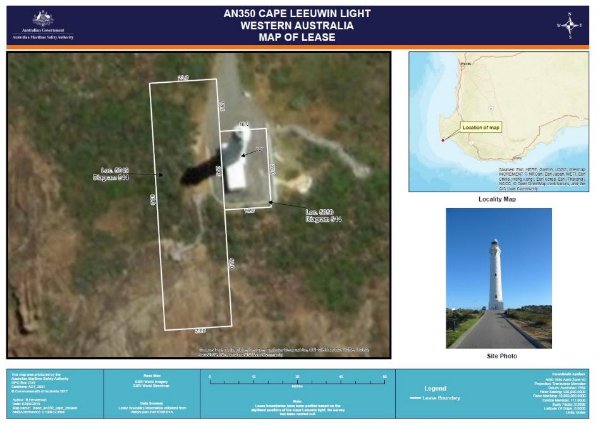 Figure 6. AMSA Cape Leeuwin Map of Lease, 2018 (Source: Esri, DigitalGlobe, GeoEye, Earthstar Geographics, CNES/Airbus DS, USDA, USGA, AeroGRID, IGN, and the GIS User Community)
Figure 6. AMSA Cape Leeuwin Map of Lease, 2018 (Source: Esri, DigitalGlobe, GeoEye, Earthstar Geographics, CNES/Airbus DS, USDA, USGA, AeroGRID, IGN, and the GIS User Community)
2.3 Lease and ownership
AMSA holds a lease for the lighthouse from the Department of Biodiversity, Conservation and Attractions (WA) (formerly the Department of Conservation and Land Management). The current lease was signed on 1 December 2000.
The AMSA lease consists of two parcels of land equalling a total surface area of 2,387m2:
• Lot 1: 432m2
• Lot 2: 1,955m2
(See Figure 6 for map of lease area).
Due to interest in the site from the general public, a tourism licence between AMSA and DBCA was signed on 1 December 2000. The licence permits the practice of tours inside the lighthouse tower.
2.4 Listings
The table below details the various heritage listings of the Cape Leeuwin Lightstation.
Register | ID |
Commonwealth Heritage List | 1054164[v] |
Register of the National Estate | 9399 |
Western Australia Heritage Register | 001045[vi] |
2.5 Access
The Cape Leeuwin Lightstation can be accessed via Leeuwin Rd, a sealed vehicle track which terminates as a vehicle parking site. Further vehicle access is only permitted for authorised personnel. In order to reach the lighthouse tower, all visitors are required to travel via walking track to the base of the tower. Owing to the existence of concrete apron paving, walking access is available around the lighthouse base.
 Figure 7. View of access road, Cape Leeuwin Lighthouse (© AMSA, 2018)
Figure 7. View of access road, Cape Leeuwin Lighthouse (© AMSA, 2018)

3. History
3.1 General history of lighthouses in Australia
The first lighthouse to be constructed along Australian soil was Macquarie Lighthouse, located at the entrance to Port Jackson, NSW. First lit in 1818, the cost of the lighthouse was recovered through the introduction of a levy on shipping. This was instigated by Governor Lachlan Macquarie, who ordered and named the light.
The following century oversaw the construction of hundreds of lighthouses around the country. Constructing and maintaining a lighthouse were costly ventures that often required the financial support of multiple colonies. However, they were deemed necessary aids in assisting the safety of mariners at sea. Lighthouses were firstly managed by the colony they lay within, with each colony developing their own style of lighthouse and operational system. Following Federation in 1901, which saw the various colonies unite under one Commonwealth government, lighthouse management was transferred from state hands to the Commonwealth Lighthouse Service.
Lamps and optics – an overview
Lighthouse technology has altered drastically over the centuries. Eighteenth century lighthouses were lit using parabolic mirrors and oil lamps. Documentation of early examples of parabolic mirrors in the United Kingdom, circa 1760, were documented as consisting of wood and lined with pieces of looking glass or plates of tin. As described by Searle, ’When light hits a shiny surface, it is reflected at an angle equal to that at which it hit. With a light source is placed in the focal point of a parabolic reflector, the light rays are reflected parallel to one another, producing a concentrated beam’.[vii]


Figure 8. Incandescent oil vapour lamp by Chance Brothers (Source: AMSA)
Figure 9. Dioptric lens on display at Narooma (Source: AMSA)
In 1822, Augustin Fresnel invented the dioptric glass lens. By crafting concentric annular rings with a convex lens, Fresnel had discovered a method of reducing the amount of light absorbed by a lens. The Dioptric System was adopted quickly with Cordouran Lighthouse (France), which was fitted with the first dioptric lens in 1823. The majority of heritage-listed lighthouses in Australia house dioptric lenses made by others such as Chance Brothers (United Kingdom), Henry-LePaute (France), Barbier, Bernard & Turenne (BBT, France) and Svenska Aktiebolaget Gasaccumulator (AGA of Sweden). These lenses were made in a range of standard sizes, called orders—see ‘Appendix 2. Glossary of lighthouse Terms relevant to Cape Leeuwin Lighthouse’.
Early Australian lighthouses were originally fuelled by whale oil and burned in Argand lamps, and multiple wicks were required in order to create a large flame that could be observed from sea. By the 1850s, whale oil had been replaced by colza oil, which was in turn replaced by kerosene, a mineral oil.
In 1900, incandescent burners were introduced. This saw the burning of fuel inside an incandescent mantle, which produced a brighter light with less fuel within a smaller volume. Light keepers were required to maintain pressure to the burner by manually pumping a handle as can be seen in Figure 8.
In 1912, Swedish engineer Gustaf Dalén, was awarded the Nobel Prize in physics for a series of inventions relating to acetylene-powered navigation lights. Dalén’s system included the sun valve, the mixer, the flasher, and the cylinder containing compressed acetylene. Due to their efficiency and reliability, Dalén’s inventions led to the gradual de-staffing of lighthouses. Acetylene was quickly adopted by the Commonwealth Lighthouse Service from 1915 onwards.
Large dioptric lenses, such as that shown in Figure 9, gradually decreased in popularity due to cost and the move towards unmanned automatic lighthouses. By the early 1900s, Australia had stopped ordering these lenses with the last installed at Eclipse Island in Western Australia in 1927. Smaller Fresnel lenses continued to be produced and installed until the 1970s when plastic lanterns, still utilising Fresnel’s technology, were favoured instead. Acetylene remained in use until it was finally phased out in the 1990s.
In the current day, Australian lighthouses are lit and extinguished automatically using mains power, diesel generators, and solar-voltaic systems.
3.2 The Commonwealth Lighthouse Service
When the Australian colonies federated in 1901, it was decided that the new Commonwealth Government would be responsible for coastal lighthouses. This included only the major lights used by vessels travelling from port to port, not the minor lights used for navigation within harbours and rivers. There was a delay before this new arrangement came into effect and the existing lights continued to be operated by the states.
Since 1915, various Commonwealth departments have managed lighthouses. AMSA, established under the Australian Maritime Safety Authority Act 1990 (Cth), is now responsible for operating Commonwealth lighthouses and other marine aids to navigation, along with its other functions.

Figure 10. Dalén’s system – sunvalve, mixer and flasher (Source: AMSA)
3.3 Western Australian lighthouse administration
The table below details the authorities of WA lighthouse management from 1915 to present.
Time Period | Administration |
1915 – 1921 | Lighthouse Branch, No 1. District (Western Australia and Northern Territory), Fremantle. |
1921 – 1927 | District Lighthouse Officer and Deputy Director of Navigation, Western Australia. |
1927 – 1963 | Deputy Director of Lighthouses and Navigation, Western Australia. |
1963 – 1972 | Department of Shipping and Transport, Regional Controller, Western Australia. |
1972 – 1977 | Department of Transport [III], Western Australia. |
1977 – 1982 | Department of Transport [III], Western Australia Region. |
1982 – 1983 | Department of Transport and Construction, Regional Office, Western Australia. |
1983 – 1987 | Department of Transport [IV], Western Australian Region. |
1987 – 1990 | Department of Transport and Communications, Regional Office Western Australia. |
1991 – | Australian Maritime Safety Authority |
3.4 Cape Leeuwin: a history
Aboriginal history
The Wardandi, one of the fourteen Noongar tribes, have significant links to the cape which is known as Doogalup. The cape has heritage significance.
Further consultation is required and this section will be updated in future versions of the plan.
Early European history
Cape Leeuwin was named by Matthew Flinders, English navigator and cartographer, on 7 December 1801 for its proximity to the region named Leeuwin’s Land by Dutch navigators in 1622[viii].
The state of Western Australia was proclaimed on 18 June 1829, shortly followed by groups of settlers to the southwest coast. In the following decades, land was divided and large pastoral leases taken up as the timber industry flourished. In 1830, London surveyor, James Woodward Turner, arrived on the Emily Taylor with the first group of settlers to the area. He was granted 3,000 acres of land. Among these parcels of land was a section of Cape Leeuwin (Doogalup) which would later become the site of the lighthouse.
During the 1880s, Turner sold the Cape Leeuwin property to MC Davis before it was passed to Millars’ Karri & Jarrah Company in 1902. The Commonwealth eventually acquired the lighthouse site in 1915[ix].
3.5 Planning a lighthouse
Why Cape Leeuwin?
In the 1850s, the state of Western Australia set out to establish a lighthouse in its south-western corner. A number of potential dangers had been identified surrounding the Cape and were addressed in initial discussions on the construction of a light.
It was submitted that, in the interests of navigation and the increasing carrying trade of the Australian Colonies, a Lighthouse is urgently required at Cape Leeuwin…[x]
The P & O Mail Steamers bound from Point-de-Galle to Australian Ports generally shape their course from 20 to 25 miles S.W. of Cape Leeuwin, and then haul up to make the land off the White Topped Rocks or Chatham Island to avoid this dangerous corner, especially after Westerly gales, and Leeuwin, as well as the question of the existence of the Rambler Rock[xi].
A number of shipwrecks had been recorded in the vicinity of Cape Leeuwin:
• 1849: The schooner Bee wrecked off Cape Leeuwin[xii]
• 1857: The Enterprise wrecked at Flinders Bay[xiii]
• 1872: The Hokitika wrecked at Geographe Rock (20 km off the Cape)[xiv]
• 1878: The brigantine Salve wrecked in Flinders Bay[xv]
Cape Leeuwin’s position on the far south-western corner of the Australian continent proved critical as a cornerstone along the great southern coast-line shipping route – one of the busiest sea traffic routes on the Australian coast.
The necessity of a light at Cape Leeuwin is unanimously agreed upon by the Commanders of this Company who have had experience of the Australian coast, and it is also their general opinion that such light should be a bright flash one of the first order, visible at a distance of not less than 20 miles in clear weather[xvi].
Additionally, the abundance of limestone resources in the area further cemented the choice of Cape Leeuwin as this could be used as the primary construction material, reducing costs.
Despite avid discussions, little action was taken until the 1873 Conference of the Principal Marine Officers of Marine Departments of the Australasian Colonies restarted efforts to construct a station on the south-western corner. Delays continued well into the 1890’s until the premier of Western Australia, Sir John Forrest, made the executive decision to fund the construction of a lighthouse from his own treasury. Initially advocating for a lighthouse to be constructed on an island off the coast, Sir Forrest was persuaded from this decision after discussions proved such a venture would be too costly. The abundance of limestone resources found on Cape Leeuwin (Doogalup) could be used as the primary construction material – an advantage that secured the site[xvii].
With the site and necessary monetary support secured, planning for a lighthouse at Cape Leeuwin began in 1894.
Design
William T Douglass, of the renowned British lighthouse engineers, served as consultant engineer and architect for the Cape Leeuwin light. His designs incorporated local stone resources, limestone and granite.
However, the colonial architect of the time, George T Poole, made modifications to Douglass’ designs. Fenestration, the base shape of the tower, and the number of windows was altered resulting in completion of a lighthouse in 1896 that didn’t match Douglass’ original design[xviii].
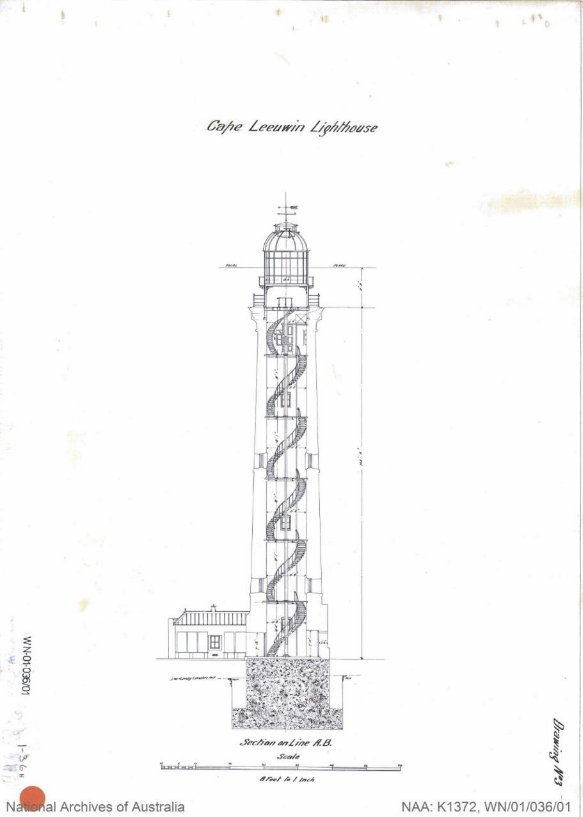
Figure 11. Cape Leeuwin Lighthouse drawing. Image courtesy of the National Archives of Australia, NAA: K1371, WN/01/036/01 (© Commonwealth of Australia, National Archives of Australia)
The plans for the lighthouse indicated the desire for a limestone tower and quarters with a supplementary red light. Alongside the tower, two cottages were to be constructed of limestone which would serve as the residence of the keepers.
Construction
On 17 January 1895, tenders were called by the Director of Public Works, Mr AW Venn for construction of a lighthouse. Davies and Wishart had their tender of £7,782.11.6 accepted and were chosen as the successful contractors for the lighthouse’s construction (price excluded dome and apparatus). The lantern allegedly cost an additional £425 and the optical apparatus a further £4,069[xix].
In August 1895, the iron barque West Riding sailing from London was declared ‘lost’ after it failed to arrive in Fremantle. The barque had been carrying the light apparatus destined for Cape Leeuwin Lighthouse and its loss delayed the lighthouse’s completion as new orders had to be sent to London. In December, 1895, the foundation stone was laid at the site[xx]. However, the site was not as stable as first believed and no less than seven metres of earth had to be excavated to reach the solid bedrock below. The site then required approximately 420 cubic metres of concrete and 760 cubic metres of masonry to fill in the hole and serve as a suitable foundation[xxi]. Limestone for the 39-metre tower and four accompanying cottages was quarried locally.
Opening day for the Cape Leeuwin Lighthouse, on 10th December 1986, was a momentous event for the state of Western Australia. The premier dedicated the lighthouse to the mariners of the world and a time capsule was laid with the foundation stone which read:
Foundation Stone
Laid by Hon. Sir John Forrest KCMC
Premier of the Colony
13th December 1895
The Notice to Mariners on 10 December 1986 read:
The Marine Board has been notified that the new light at Cape Leeuwin (W.A) will be displayed on and after to-day. The light is a revolving one, of the Feux Eclairs, or lightning flash lights, type, and will show a single flash of white light for five seconds, duration of flash one-fifth seconds. The tower is cylindrical in form, 135ft in height from base to vane, and is of natural stone colour. The focal plane of the light is 185 ft above high water, and the light will be visible all round the horizon from a distance of 19 ¾ miles in clear weather. A subsidiary light formerly mentioned will not be exhibited. The approximate position of the new lighthouse is latitude 34deg 22min south, longitude 115deg 8min east. The necessity of exhibiting a light on the extreme point of Cape Leeuwin for the guidance of mariners has long been recognised by those trading around the Cape[xxii].
Equipment when built
Upon completion, the lighthouse, composed of a total of seven levels and stood 128 ft (39 m) tall. The tower base was more than two metres thick and a 176-step iron spiral staircase spanned six levels to the lantern room.
The original light source was a kerosene wick lamp using seven gallons of fuel a night. The Chance Brothers. first-order lens, rotating in a mercury bath[xxiii], produced 250,000 candelas, visible for 30 miles on a clear night. The red subsidiary light originally intended for the lighthouse was transferred to Bathurst Point Lighthouse, WA in 1900 after it was revealed Cape Leeuwin Lighthouse did not have a space built to accommodate it [xxiv].
Three keepers were stationed at the lighthouse.
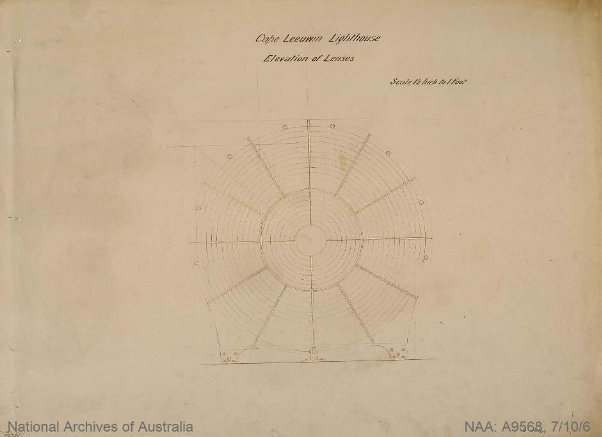
Figure 12. Cape Leeuwin Lighthouse 1st Order Chance Brothers Lens. Image courtesy of the National Archives of Australia, NAA: A9568, 7/10/6 (© Commonwealth of Australia, National Archives of Australia)
3.6 Lighthouse keepers
Cape Leeuwin Lighthouse was manned for nearly 100 years from 1896 until 1995. Initially, one chief lighthouse keeper and two assistant keepers were stationed at the site. The keepers and their families resided on-site in keepers quarters constructed at the same time as the lighthouse. At some point prior to 1908, a third cottage was built to house an additional assistant keeper brought on to relieve duties and cut firewood[xxv].
Of all the keepers stationed at Cape Leeuwin, Felix von Luckner proved infamous. Von Luckner briefly served as assistant keeper before joining the German navy. He went on to become a highly decorated German naval officer during World War I (1915-1918). Over the course of his navy career on the Seeadler, von Luckner captured 14 Allied ships without any casualties[xxvi].
3.7 Chronology of major events
The following table details the major events that occurred at Cape Leeuwin Lighthouse from its construction in 1895 to present day.
Date | Event Details |
13 December 1895 | Foundation stone laid by the premier of Western Australia.[xxvii] |
10 December 1896 | Lighthouse officially opened by Sir John Forrest.[xxviii] |
September 1905 | Governor-general and the state governor visit Cape Leeuwin Lighthouse.[xxix] |
1908 | Additional cottage constructed for an assistant lightkeeper. |
31 March 1910 | The steamer Pericles wrecked on the Cape. Lightkeepers lit kerosene lamps to guide life boats to shore. No fatalities recorded.[xxx] |
January 1913 | Lightkeepers awarded the Certificate of Merit for their actions following the wrecking of the Pericles.[xxxi] |
9 August 1916 | Cape Leeuwin Lighthouse transferred from the Western Australian government to the Commonwealth.[xxxii] |
July 1955 | Marine radio navigation beacon installed. |
1974 | Lighthouse painted white. The names of the stonemasons who participated in its construction were found cut into the stone. |
1975 | Auto alarm system installed, which reacted to radio frequency distress signals. |
1977 | Power house and transmitter building erected at Cape Leeuwin Lightstation. |
1980 | Cape Leeuwin Lighthouse listed on the Register of the National Estate. |
September 1992 | Lighthouse switched to automatic control. |
1995 | Lighthouse de-staffed. |
22 June 2004 | Cape Leeuwin Lighthouse listed on the Commonwealth Heritage List. |
13 May 2005 | Cape Leeuwin Lighthouse listed on the WA State Heritage Register. |
3.8 Changes and conservation over time
Cape Leeuwin Lighthouse has undergone a number of changes, both technological and physical, over the decades which have altered the lightstation.
The Brewis Report (1912)
Commander CRW Brewis, retired naval surveyor, was commissioned in 1911 by the Commonwealth Government to report on the condition of existing lights and to recommend any additional ones. Brewis visited every lighthouse in Australia between June and December 1912 and produced a series of reports published in their final form in March 1913. These reports were the basis for future decisions made in relation to the individual lighthouses, and capture a snapshot of the tower at that point in history.
Recommendations for Cape Leeuwin Lighthouse made by Brewis included alterations to the clockwork mechanism to increase the power of the light by 40 per cent, the repositioning of the weight tubes and removal of the fourth keeper.
Brewis Report: Cape Leeuwin Light[xxxiii] |
60 miles from Cape Naturaliste, 52 miles from D’Entrecasteaux Point. Lat. 34º 22’ S., Long. 115º 09’ E., Chart No’s. 413 and 1034. – Established 1896. Last altered 1908. Character: One white, dioptric, 1st Order (about 450,000 c.p.). Flashing, showing one flash of one-fifth second duration every five seconds. Illuminant, vapourized kerosene, 85 mm. mantle. Circular grey stone tower, 115 feet. Height of focal plane, 185 feet. Visibility: In clear weather, through an arc of about 240º from 261º (S. 86º W. Mag.) to 141º (S. 34º E. Mag.), for a distance of about 20 nautical miles. Optical Apparatus: Chance Bros., 1895. Two panels, each 122º horizontal angle. One complete revolution every ten seconds. Condition and State of Efficiency: This is no longer a signal station. A chain of reefs and islets extends from the shore, the outermost danger being the south-west breaker, on which the sea seldom breaks. It has 6 feet of water over it, and 10 fathoms around, and lies S. 25º E. Mag., nearly 5 miles from Cape Leeuwin. The Geographe Reef lies 8 miles N. 60º W. Mag. from Cape Leeuwin. Vessels must not approach within signalling distance. The tower, lantern, optical apparatus, and dwellings are in good condition. Four light-keepers are station here (one for cutting firewood and relieving duties). The fourth light-keeper is unnecessary. There are no signal duties, and no auxiliary lights. Firewood can be obtained in abundance, cut ready for use, at Flinders Bay, distant 2 ¼ miles. The duration of the flash is too short for practical purposes. To increase the duration of the flash, and preserve the present character of the light (flashing every five seconds), would necessitate a new optical apparatus. This would be unreasonable, considering the excellent condition and value of the present optical apparatus. To insert a third panel would be almost as costly as an undertaking. Small vessels in the heavy sea that is met with in this locality have the greatest difficulty, owing to the motion of the vessel, in obtaining a bearing of this light at night, on account of the shortness of the flash. The flash can be lengthened by increasing the period of the light to flashing every nine seconds, and increasing the diameter of the burner. The weight-tubes are not placed to the best advantage, and should be transposed on the next occasion that general repairs require to be carried out. Communication: By road to Flinders Bay, 2 ¼ miles. Connected by telephone with Busselton (distant 60 miles), Cape Naturaliste (distant 50 miles), and to main telegraph system. Provisions by coastal steamer every five or six weeks. Mails weekly, via Karridale Timber Company’s railway. Fogs: Fogs lasting from two to six hours have been recorded, occurring principally in the early morning, between November and March. Dense smoky haze and heavy mist are also experienced, particularly in the early morning. Soundings: Great attention should be paid to the caution on the Admiralty Chart. The use of lead should never be neglected. The soundings on the Chart are of a complete and suitable nature, and vessels, by maintaining a depth of over 40 fathoms, can assure their safety. This depth should leave a vessel at least 10 miles from the light, and well clear of all outlying dangers. RECOMMENDED: (a) The speed of the light be altered by (1) inserting new spur wheels in the clock; and (2) substituting for the present 85 mm. mantle an installation of three mantles, each 55 mm. This will increase the beam of the light, also the power of the light, by about 40 per cent, and produce a character of one flash of fully one-third second duration every nine seconds. Candle-power, about 630,000, Provided the use of the lead (an ordinary precaution in navigation) is never neglected, even though the light is in sight, this should provide adequately and efficiently for the purposes of navigation. (b) The weight-tubes be correctly placed. (c) One assistant light-keeper be withdrawn. |
Alterations to the Light
Changes to the light at Cape Leeuwin Lighthouse have occurred due to advances in technology. The table below lists the alterations made.
Date | Alteration |
1908 | Intensity increased to 450,000 cd. |
Pre—1912 | Red light (secondary light) discontinued. |
1925 | Kerosene lamp replaced by a pressurised kerosene incandescent-mantle system. Strength of main light increased from 450,000 to 784,000 candle power, with a visibility of 20 miles on clear nights. Speed of rotation of the lens reduced – flashing 7.5 secs with the length of the flash lasting 0.3 secs. |
14 June 1982 | Converted to mains electricity with standby diesel alternator, 1000W tungsten halogen lamps. Intensity: 1,000,000 cd. |
September 1992 | Light automated. |
2017 | Light source converted to LED. |
Conservation Works
The following tables lists the rectificaiton works undertaken to maintain the lighthouse.
Date | Works Completed |
2001 | Major works carried out: - Repair of corroded internal stairs
- Internal and external catwalk repainted
- Lantern room dome and gutter repainted
- Lantern room vents, internal catwalk and blocking plate skins removed and repaired
- Glazing leakage repaired
|
2010 | Major works carried out: - Paint removed from fifth and sixth floors
- Internal fittings stripped and repainted (sixth floor).
- Tower windows resealed (sixth floor).
- Internal paint removed (fourth floor)
- Two sets of stairs and decks repainted.
|
2011 | Major works carried out: - Internal walls and ceilings on ground, first and second floors stripped.
- Internal handrails painted (ground, first, second floors).
- Glass block windows replaced with polycarbonate clear windows with aluminium frames.
- Asbestos facia replaced with wood facia (battery room floor).
- Asbestos roof materials and debris replaced with colourbond roofing (battery room floor).
- Wind vane repaired and repainted.
- Battery room access doors repaired.
|
2015 | Major works carried out: |
2020 | Major works carried out: - Asbestos wall sheeting removed from oil store room.
- Oil store door replaced.
- Oil store roof repaired.
|
2021-2022 | Major works carried out: - Repainting of lighthouse.
- Repair and repointing of stonework.
- Repair of lantern room corrosion.
- Replacement of oil store roof, gutter and flashing.
- Repair of internal accessways.
|
3.9 Summary of current and former uses
From its construction in 1896, Cape Leeuwin Lighthouse has been used as a marine AtoN for mariners at sea. Its AtoN capability remains its primary use.
The Cape Leeuwin Lightstation has consistently maintained a popular standing as a tourism site. The keeper’s cottages are now used for a variety of uses:
• Keepers cottage 1: visitor information, gift shop and café
• Keepers cottage 2: interpretive centre
• Keepers cottage 3: caretaker’s living quarters
• Collection of buildings (1950s): education centre/ office, staffroom and store shed.
• Building (1970s): public toilets
3.10 Summary of past and present community associations
Aboriginal heritage significance
The cape has significant past, present and future significance for the Wardandi, part of the Noongar People. Further consultation with traditional stakeholders is required for a greater understanding of the past and present associations held across the region.
Local, National, and International associations
The area is frequented by local and incoming visitors due to its historical, mythological and aesthetic associations. The site’s popularity triggered the introduction of tours inside the lighthouse.
3.11 Unresolved questions or historical conflicts
Any historical conflicts or unresolved questions brought to light will be addressed here in future versions of this plan.
3.12 Recommendations for further research
Research on past lighthouse keepers of the Cape Leeuwin Lighthouse may be beneficial in determining the full extent of the social value placed on the site within the surrounding communities of the Cape. Additionally, archaeological investigation of the site may reveal further information on prehistoric and historic uses of Cape Leeuwin to broaden understandings of the site’s intrinsic value[xxxiv].

4. Fabric
4.1 Fabric register
The cultural significance of the lighthouse resides in its fabric and in its intangible aspects, such as the meanings people ascribe to it, and its connections to other places and things. The survival of its cultural value depends on an understanding of what is significant and on clear thinking about the consequences of change. The Burra Charter sets out good practice for conserving cultural significance.
Criteria listed under ‘Heritage Significance’ refer to the criteria satisfied within the specific Commonwealth heritage listing (see section 5.1).
Lighthouse Feature: Lantern roof
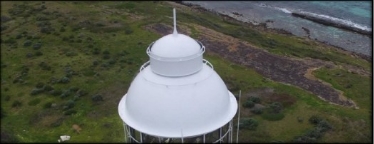

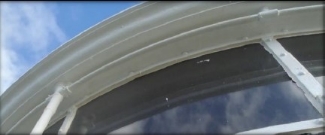
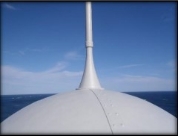
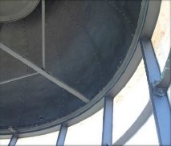


© AMSA 2020
Description and condition
1896 Chance Bros part spherical dome of copper sheets lapped and screwed to ribs.
- Ribs – Chance Bros cast iron radial ribs.
- Inner skin – copper sheets screw fixed to ribs.
- Ventilator – drum type (wind vane and direction pointers removed, see Site – Wind Vane below).
- Gutter – circular ring of cast iron pieces bolted together.
- Handrails – one circular hand rail attached to lantern roof, another attached to top of ventilator drum. Curved iron ladder fixed to roof.
- Drip tray – copper dish suspended under ventilator.
- Heat tube support – framework with six radial members of rolled ferrous T-section, attached to gutter and to central ring. Heat tube and lens support still in place.
Finish | painted |
Condition | intact and sound |
Integrity | high |
Significance | high |
Maintenance | keep in service prepare and repaint at normal intervals |
Rectification works | none |
Heritage significance: High
The lantern roof is an original and essential part of a lighthouse associated with the development of coastal navigation in Australia (criterion a).
The lantern roof contributes to the aesthetic value of the lighthouse (criterion e).
Lighthouse Feature: Lantern glazing
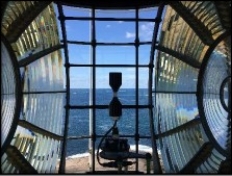

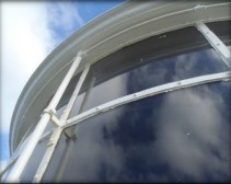
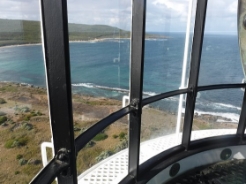
© AMSA 2020
Description and condition
1896 Chance Bros, cylindrical in form.
- Panes – curved rectangular glass, three tiers. Blank panes to landward side.
- Astragals – Chance Bros vertical and horizontal astragals of rectangular and triangular section iron, bolted to gutter ring at top, and to lantern base below.
- Ladder rail – attached to gutter.
- Downpipes – four copper downpipes discharging to balcony floor.
- Handholds – three cast metal handholds bolted to each vertical astragal, except where downpipes are/were fitted.
Finish | astragals and glazing strips painted |
Condition | intact and sound |
Integrity | high |
Significance | high |
Maintenance | keep in service, reglaze as necessary, prepare and repaint at normal intervals |
Rectification works | none |
Heritage significance: High
The lantern glazing is an original and essential part of a lighthouse associated with the development of coastal navigation in Australia (criterion a).
Lighthouse feature: Internal catwalk
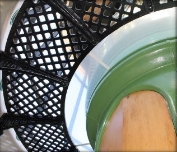
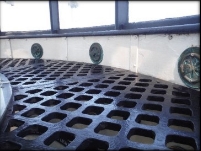
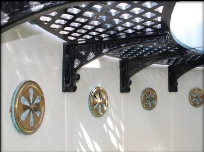
© AMSA 2020
Description and condition
Cast iron lattice floor panels supported on solid cast iron brackets bolted to the upper section of the lantern base.
- Ladder – fixed ladder with cast iron treads on wrought iron strings.
Finish | painted |
Condition | intact and sound |
Integrity | high |
Significance | high |
Maintenance | keep in service prepare and repaint at normal intervals |
Rectification works | none |
Heritage significance: High
The internal catwalk is an essential part of a lighthouse associated with the development of coastal navigation in Australia (criterion a).
Lighthouse feature: External catwalk
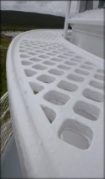
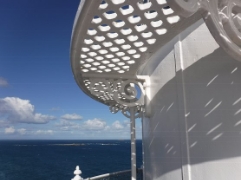
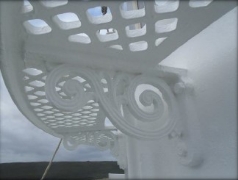
© AMSA 2020
Description and condition
1896 Chance Bros, cast iron lattice floor panels supported on openwork cast iron brackets bolted to lantern base.
Finish | painted |
Condition | intact and sound |
Integrity | high |
Significance | high |
Maintenance | keep in service prepare and repaint at normal intervals |
Rectification works | none |
Heritage significance: High
The external catwalk is an original and essential part of a lighthouse associated with the development of coastal navigation in Australia (criterion a).
The external catwalk contributes to the aesthetic value of the lighthouse (criterion e).
Lighthouse feature: Lantern base
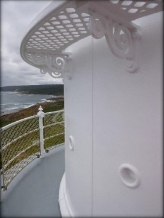

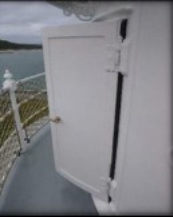
 © AMSA 2020
© AMSA 2020
Description and condition
1896 Chance Bros, cylindrical in form. Curved panels of cast iron fixed together.
- Internal lining – curved iron plates screwed to the outer cast iron panels.
- Vents – round external air inlets as part of wall panels. Large round copper alloy regulators below internal catwalk and small ones above.
- Door – iron framed and sheeted door hung on copper alloy hinges. Copper alloy mortise lock with copper alloy bar handles inside and out. Brass maker’s plate fixed to door.
Finish | painted |
Condition | intact and sound |
Integrity | high |
Significance | high |
Maintenance | keep in service prepare and repaint at normal intervals |
Rectification works | none |
Heritage significance: High
The lantern base is an original and essential part of a lighthouse associated with the development of coastal navigation in Australia (criterion a).
The lantern base contributes to the aesthetic value of the lighthouse (criterion e).
Lighthouse feature: Lantern floor

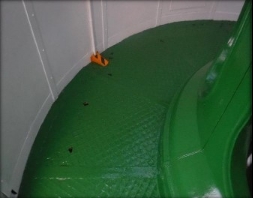
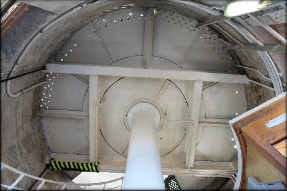 © AMSA 2020
© AMSA 2020
Description and condition
1896 floor of cast iron plates supported on rolled iron I section beams built into the tower walls.
Finish | painted |
Condition | intact and sound |
Integrity | high |
Significance | high |
Maintenance | keep in service prepare and repaint at normal intervals |
Rectification works | none |
Heritage significance: High
The lantern floor is an original and essential part of a lighthouse associated with the development of coastal navigation in Australia (criterion a).
Lighthouse feature: Lens assembly
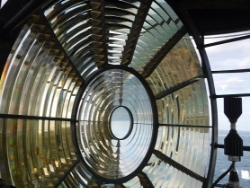
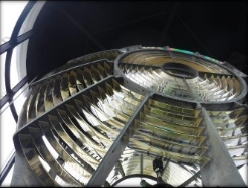
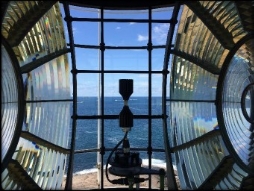
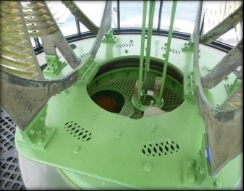 © AMSA 2020
© AMSA 2020
Description and condition
1896 Chance Bros 920mm focal radius catadioptric rotating lens assembly of glass and gunmetal, rotating at 4 rpm. Gives two single flashes in each revolution.
- Bearing – 1896 Chance Bros mercury float, see pedestal below.
Cape Leeuwin lighthouse is one of six AMSA lighthouses still operating with a 1st order rotating lens and mercury float pedestal. The lantern, lens and pedestal all date from 1896, the earliest AMSA light with such an intact system.
Finish | painted |
Condition | intact and sound |
Integrity | high |
Significance | high |
Maintenance | keep in service prepare and repaint at normal intervals |
Rectification works | none |
Heritage significance: High
The lens assembly is an original and essential part of a lighthouse associated with the development of coastal navigation in Australia (criterion a).
The original 1896 1st Order Chance Bros lens assembly is one of only six still in operation (criterion b).
Lighthouse feature: Light source

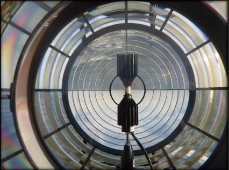 © AMSA 2020
© AMSA 2020
Description and condition
LED Array Sealite SL-LED-324-W. Installed 2017.
Condition | intact and sound |
Significance | low |
Maintenance | keep in service |
Rectification works | none |
Heritage significance: Low
Lighthouse feature: Pedestal
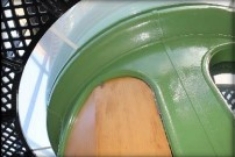


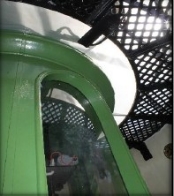
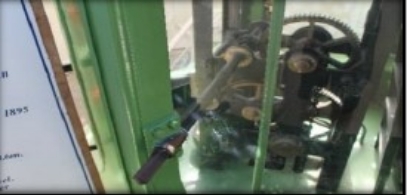
© AMSA 2020
Description and condition
1896 Chance Bros mercury float pedestal.
- Base – cast iron, in the form of a large cylinder in which the clock is mounted, with four large access openings.
- Mercury trough – cast iron circular trough mounted on top of the base. The mercury is still in place.
- Mercury float – cast iron annular float inside the trough.
- Lamp platform – cast iron platform with ribbed top surface.
- Lamp stand – three iron rod uprights, with later adaptor added on top to support the lamp changer.
- Drive – Chance Bros weight driven clock (disengaged). Two motor/gearbox units mounted on top of the clock, driving the original drive gears on the float. Housed inside the pedestal base, behind recent clear acrylic covers fitted to the openings in the base. One of the openings is fitted with recent plywood access door.
Finish | painted |
Condition | intact and sound |
Integrity | high |
Significance | high |
Maintenance | keep in service prepare and repaint at normal intervals |
Rectification works | none |
Heritage significance: High
The pedestal is an original and essential part of a lighthouse associated with the development of coastal navigation in Australia (criterion a).
The original 1896 Chance Bros mercury float pedestal is one of only six still in operation (criterion b).
Lighthouse feature: Balcony floor

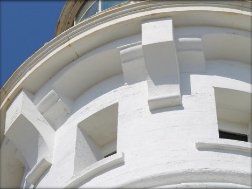

© AMSA 2020
Description and condition
1896 stone slab floor, supported on the cornice and top of the tower wall.
Finish | painted with resilient grey coating |
Condition | intact and sound |
Integrity | high |
Significance | high |
Maintenance | keep in service maintain seal joints prepare and repaint at normal intervals |
Rectification works | none |
Heritage significance: High
The balcony floor is an original and essential part of a lighthouse associated with the development of coastal navigation in Australia (criterion a).
Lighthouse feature: Balcony balustrade
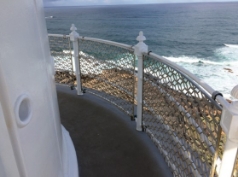
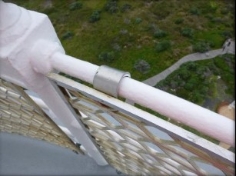

© AMSA 2020
Description and condition
1896 Chance Bros cast iron balusters with four iron pipe rails. Recent expanded aluminium mesh grille with extruded aluminium frame.
Finish | iron parts: painted aluminium: unpainted |
Condition | intact and sound |
Integrity | high |
Significance | recent mesh grille: low all other fabric: high |
Maintenance | keep in service prepare at normal intervals |
Rectification works | none |
Heritage significance: High
The balcony balustrade is an original and essential part of a lighthouse associated with the development of coastal navigation in Australia (criterion a).
Lighthouse feature: Walls

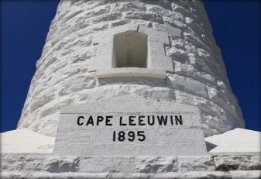
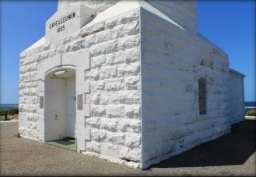





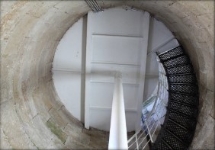 © AMSA 2020
© AMSA 2020
Description and condition
1896 walls of stone masonry, rock faced with chiselled dressings outside, chiselled inside.
Finish | external: painted internal: bare stone |
Condition | Heavy mould on internal walls in upper part of tower, some mould on external walls, pointing deteriorating in some internal locations. Otherwise intact and sound. |
Integrity | high |
Significance | high |
Maintenance | Keep in service, monitor condition of pointing and stonework repair pointing as required. Prepare and repaint external surfaces at regular intervals. Treat mould on internal walls |
Rectification works | implement moisture controls |
Heritage significance: High
The tower walls are an original and essential part of a lighthouse associated with the development of coastal navigation in Australia (criterion a).
The painted, rock-faced tower walls contribute to the aesthetic values of the lighthouse (criterion e).
Lighthouse feature: Windows


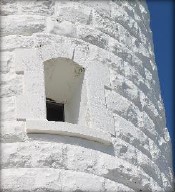
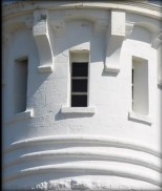
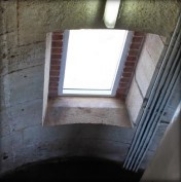
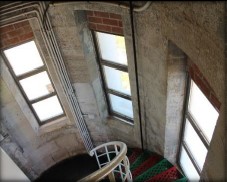
 © AMSA 2020
© AMSA 2020
Description and condition
1896 window openings with later stainless steel framed fixed glass or glass brick infill.
- External grilles – recent stainless steel fixed grilles on ground level windows.
Finish | unpainted |
Condition | sound |
Integrity | high |
Significance | original openings: high recent stainless steel and glass: low |
Maintenance | keep in service |
Rectification works | none |
Heritage significance: High
The windows are an original and essential part of a lighthouse associated with the development of coastal navigation in Australia (criterion a).
The windows contribute to the aesthetic value of the lighthouse (criterion e).
Lighthouse feature: Staircase screen and cupboard

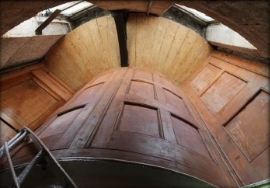
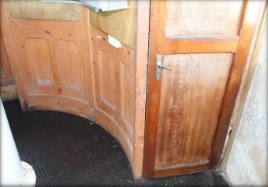
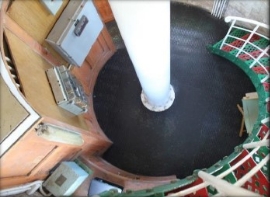
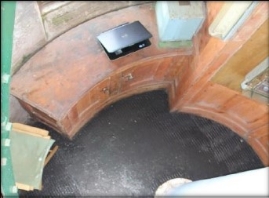
© AMSA 2020
Description and condition
- 1896 semi-circular wall enclosing the stairwell where it arrives at the service room floor (the fifth floor), timber framed and panelled
- Timber ceiling
- Attached timber cupboard with two panelled doors. Later sheeting and electrical equipment attached facing centre of the tower.
- Cast iron brackets bolted to tower walls support the ceiling (and originally the rainwater tank, now removed).
Finish | stained/varnished |
Condition | intact and sound |
Integrity | high |
Significance | high |
Maintenance | keep in service prepare and repaint at normal intervals |
Rectification works | none |
Heritage significance: High
The staircase screen and cupboard are original and essential parts of a lighthouse associated with the development of coastal navigation in Australia (criterion a).
Lighthouse feature: Doors
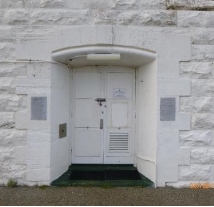

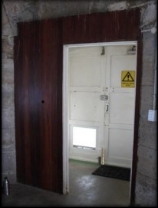
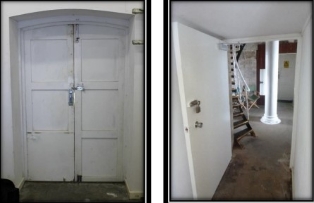 © AMSA 2020
© AMSA 2020
Description and condition
Timber framed and sheeted doors in timber frames to the tower entrance and to the oil store entrance. Each opening has a timber frame with arched head and a pair of door leaves hung on butt hinges. Tower entrance door has a cylinder dead-locking rim-lock.
Finish | painted |
Condition | intact and sound |
Integrity | high |
Significance | high |
Maintenance | keep in service prepare and repaint at normal intervals |
Rectification works | none |
Heritage significance: High
The tower doors are an essential part of a lighthouse associated with the development of coastal navigation in Australia (criterion a).
Lighthouse feature: Intermediate floors
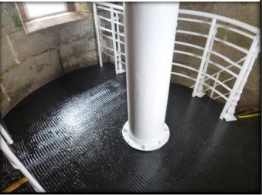

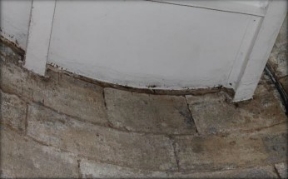
 © AMSA 2020
© AMSA 2020
Description and condition
Five intermediate floors of 1896 iron checker plate on rolled iron I section beams built into tower walls.
- Balustrade – continuous with iron stair balustrade, with extended height railing of steel flat and pipe sections.
Finish | painted |
Condition | Corrosion on edges of floor plates and supporting beams where they intersect with masonry wall. Otherwise intact and sound. |
Integrity | high |
Significance | extended balustrade: low other parts: high |
Maintenance | keep in service treat corrosion prepare and repaint at normal intervals |
Rectification works | none |
Heritage significance: High
The intermediate floors are an original and essential part of a lighthouse associated with the development of coastal navigation in Australia (criterion a).
Lighthouse feature: Stairs
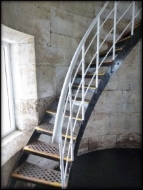

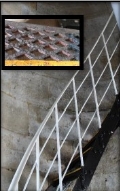
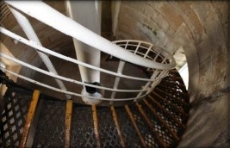
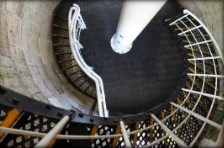

© AMSA 2020
Description and condition
1896 geometric stair with cast iron treads bolted to curved iron strings. Wrought iron handrail and stanchions.
Finish | painted |
Condition | localised corrosion on external stair stringers and wall anchor bolts otherwise intact and sound |
Integrity | high |
Significance | high |
Maintenance | keep in service prepare and repaint at normal intervals |
Rectification works | none |
Heritage significance: High
The internal stairs are an original and essential part of a lighthouse associated with the development of coastal navigation in Australia (criterion a).
Lighthouse feature: Ground floor
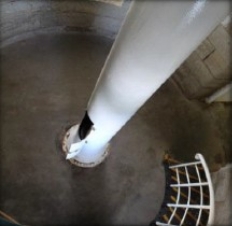
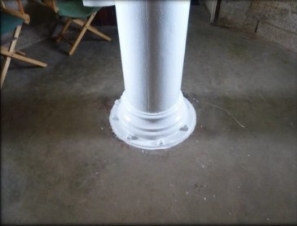
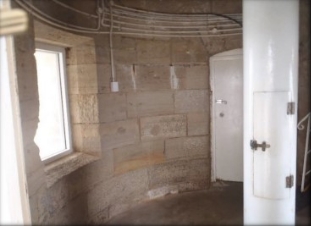
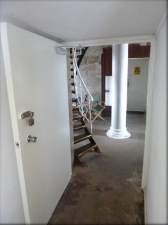 ©AMSA 2020
©AMSA 2020
Description and condition
1896 concrete slab on ground.
Finish | painted |
Condition | intact and sound |
Integrity | high |
Significance | high |
Maintenance | keep in service prepare and repaint at normal intervals |
Rectification works | none |
Heritage significance: High
The ground floor is an original and essential part of a lighthouse associated with the development of coastal navigation in Australia (criterion a).
Lighthouse feature: Weight tube

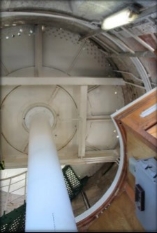

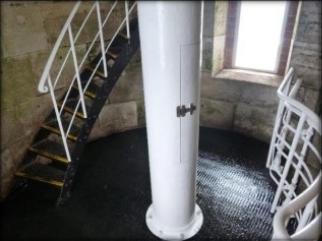
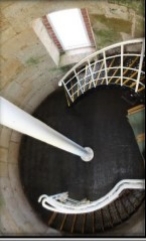 © AMSA 2020
© AMSA 2020
Description and condition
1896 riveted iron tube in the centre of the tower, between the lantern floor and the ground floor.
Finish | painted |
Condition | intact and sound |
Integrity | high |
Significance | high |
Maintenance | preserve prepare and repaint at normal intervals |
Rectification works | none |
Heritage significance: High
The weight tube is an original and essential part of a lighthouse associated with the development of coastal navigation in Australia (critieron a).
Lighthouse feature: Oil store
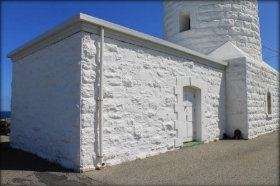
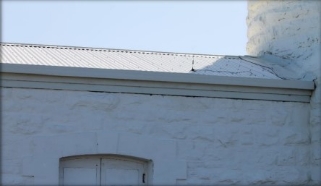
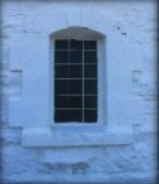
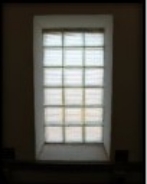

© AMSA 2020
Description and condition
1896 stone single-storey room attached to the base of the tower. Later timber framed hipped
roof with steel sheet roof, eaves and gutter. Ceilings and walls lined with sheet material. Concrete floor.
- Equipment – backup power supply, automatic identification system and associated control equipment
Finish | painted |
Condition | intact and sound |
Integrity | high |
Significance | high |
Maintenance | keep in service prepare and repaint at normal intervals |
Rectification works | none |
Heritage significance: High
The oil store is an original and essential part of a lighthouse associated with the development of coastal navigation in Australia (criterion a).
The oil store maintains principal characteristics of late nineteenth century lighthouse complexes (criterion d).
The low height of the oil store contributes to the aesthetic value of the lighthouse (criterion e).
Lighthouse feature: Wind vane
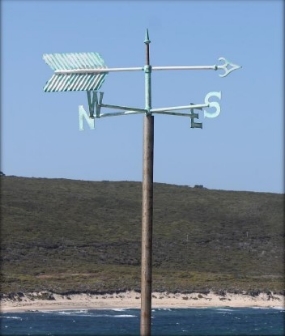 © AMSA 2020
© AMSA 2020
Description and condition
1896 Chance Bros wind vane and cardinal pointers, removed from the lantern roof and installed on a steel post near the base of the tower (outside AMSA area).
Condition | sound |
Integrity | medium |
Significance | high |
Maintenance | monitor as necessary |
Rectification works | none |
Heritage significance: High
The original Chance Bros wind vane contributes to the aesthetic value of the lighthouse (criterion e).
Lighthouse feature: Apron paving
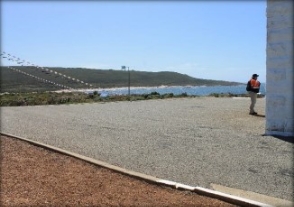
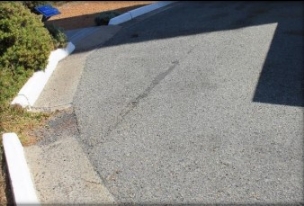
Description and condition
Asphalt paving around the tower and oil store, with concrete kerb at margin.
Finish | asphalt |
Condition | sound |
Integrity | high |
Significance | low |
Maintenance | inspect monitor cracks and repair if necessary |
Rectification works | none |
Heritage significance: Low
4.2 Related object and associated AMSA artefacts
There are no AMSA artefacts currently stored at Cape Leeuwin Lighthouse.
An exhibition showcasing a collection of artefacts is located within the larger lightstation and overseen by the tourist operators.
4.3 Comparative analysis
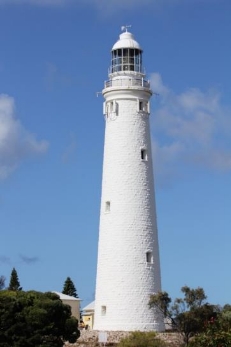

Figure 13. View of Wadjemup (Rottnest Island) Lighthouse (© AMSA, 2017)
Figure 14. View of Cape Leeuwin Lighthouse (© AMSA, 2010)
Cape Leeuwin Lighthouse bears significant resemblance to the Wadjemup (Rottnest Island) Lighthouse located off the west coast of the state. Originally built in 1851, Wadjemup Lighthouse was replaced in 1896, the same year Cape Leeuwin Lighthouse was constructed. Both lighthouses were designed by WT Douglass and constructed from locally-quarried limestone (see Figure 15). Wadjemup stands at 38 metres high and Cape Leeuwin is 39 metres. Both Wadjemup Lighthouse, installed with a 1st Order eight panel lens, and Cape Leeuwin Lighthouse, installed with a 1st Order bi-valve lens, continue to operate on a mercury bath pedestal.
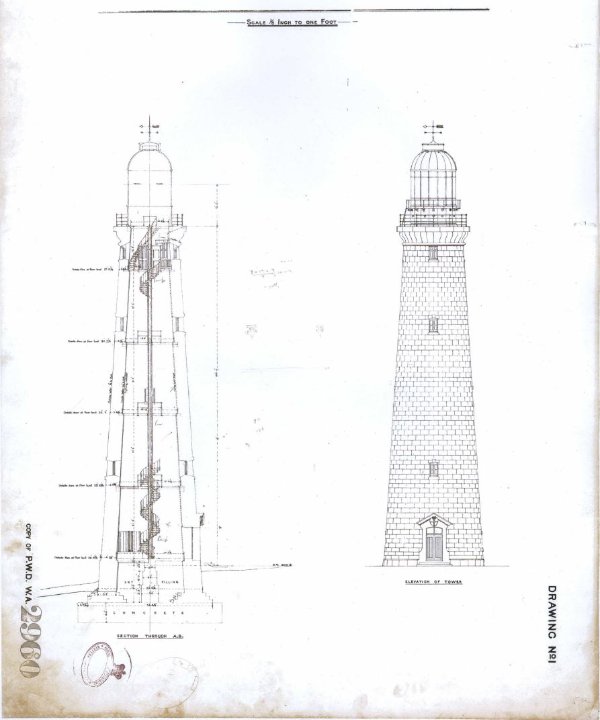
Figure 15. Wadjemup (Rottnest Island) Lighthouse drawing 1884-85. Image courtesy of the National Archives of Australia, NAA: K1372, WN/01/014/01 (© Commonwealth of Australia, National Archives of Australia)
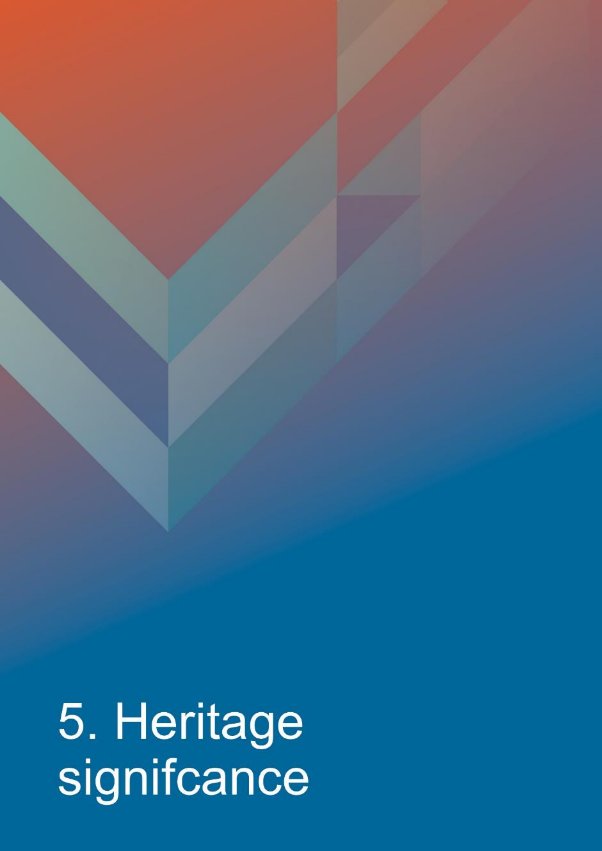
5. Heritage Significance
5.1 Commonwealth heritage list – Cape Leeuwin Lighthouse
Statement of Commonwealth heritage significance
The following information is taken from the Cape Leeuwin Lightstation listing on the Australian Heritage Database (Place ID: 105416).
Cape Leeuwin Lighthouse, completed in 1896, is important in illustrating the development of coastal navigation in Australia and the evolution of lighthouse design following the inter-colonial conference of 1873 in Sydney which resulted in an agreed series of decisions which would result in a rough national chain of navigational aids. The lighthouse had two functions; to mark the coastal route to Perth via Albany and as the first landfall for vessels crossing the Indian Ocean to Australia. The upgrading of the lighthouse in 1925 under the Commonwealth illustrates the increasing importance of coastal shipping in Australia (Criterion A) (Australian Historic Themes: 3.8 Moving goods and people)
Cape Leeuwin Lighthouse is exceptionally important in demonstrating in its original lens array and rotation mechanism the earliest use of the mercury bath system in Australia (Criterion B).
In conjunction with the Keepers Cottages (separately listed at File No. 5/2/40/4) the Lighthouse is important in illustrating the principal characteristics of late nineteenth century lighthouse complexes in remote coastal areas (Criterion D).
The lighthouse, situated on a narrow, sparsely vegetated strip of land and surrounded by sea on three sides, is significant as a prominent landmark feature on the coast of Western Australia (WA). The height of the lighthouse also makes it an outstanding landmark from the land and in particular from the approach road from Augusta (Criterion E).
The area has known Indigenous heritage values. The Australian Heritage Commission has not yet assessed the national estate significance of these values.
Commonwealth heritage values – criteria
There are nine criteria for inclusion in the Commonwealth Heritage List – meeting any one of these is sufficient for listing a place. These criteria are similar to those used in other Commonwealth, state and local heritage legislation, although thresholds differ. In the following sections, the Cape Leeuwin Lighthouse is discussed in relation to each of the criteria as based on the site’s current Commonwealth Heritage Listing (Place ID 105416).
Criterion | Relevant attributes identified | Explanation |
Criterion A – Processes This criterion is satisfied by places that have significant heritage value because of [their] importance in the course, or pattern, of Australia’s natural or cultural history. | All of the fabric of the lightstation including the tower, keepers' cottages, ancillary buildings and site layout. | Cape Leeuwin Lighthouse, completed in 1896, is important in illustrating the development of coastal navigation in Australia and the evolution of lighthouse design following the inter-colonial conference of 1873 in Sydney, which resulted in an agreed series of decisions which would result in a rough national chain of navigational aids. The lighthouse had two functions; to mark the coastal route to Perth via Albany and as the first landfall for vessels crossing the Indian Ocean to Australia. The upgrading of the lighthouse in 1925 under the Commonwealth illustrates the increasing importance of coastal shipping in Australia. |
Criterion B – Rarity This criterion is satisfied by places that have significant heritage value because of [their] possession of uncommon, rare or endangered aspects of Australia’s natural or cultural history. | Evidence of the original lens array and rotation mechanism | Cape Leeuwin Lighthouse is exceptionally important in demonstrating in its original lens array and rotation mechanism the earliest use of the mercury bath system in Australia. |
Criterion D – Typicality This criterion is satisfied by places that have significant heritage values because of [their] importance in demonstrating the principal characteristics of a class of Australia’s natural or cultural history. | All the nineteenth century buildings and layout of the complex | In conjunction with the keepers cottages, the lighthouse is important in illustrating the principal characteristics of late nineteenth century lighthouse complexes in remote coastal areas. |
Criterion E – Aesthetic characteristics This criterion is satisfied by places that have significant heritage value because of [their] importance in exhibiting particular aesthetic characteristics values by a community or cultural group. | The height of the lighthouse, its prominent location, low height of surrounding heath and relatively low height of ancillary structures. | The lighthouse, situated on a narrow, sparsely vegetated strip of land and surrounded by sea on three sides, is significant as a prominent landmark feature on the coast of Western Australia (WA). The height of the lighthouse also makes it an outstanding landmark from the land and in particular from the approach road from Augusta. |
5.2 WA State heritage register – Cape Leeuwin Lightstation
The following statement of significance and criterion information is taken from the Cape Leeuwin listing on the WA Heritage Register (Place ID: 00104).
WA State heritage – statement of significance
Cape Leeuwin Lighthouse and Quarters, a small precinct which contains a stone lighthouse, keepers’ quarters (stone) and various service buildings, has cultural heritage significance for the following reasons:
the place is part of a system of coastal lights that was developed at the end of the nineteenth century by the various Australian colonies to improve the safety to shipping operating in Australian territorial waters. Although recognised as being of major importance to the eastern colonies, it was fully funded by the state government of Western Australia and the fourth coastal lighthouse constructed by the state government;
the place, in particular the lighthouse, has retained a high degree of authenticity and integrity;
the place has aesthetic value both in its design and as a striking landmark on Cape Leeuwin;
the place was historically important to the local timber industry which relied on small ships to transport the timber to other ports. As Cape Leeuwin could be treacherous in bad weather, the light was a valuable navigational aide;
the place represents a way of life that is no longer practised in Western Australia and one which is rapidly becoming scarce in other parts of Australia and the world;
the place has strong associations with John Forrest who tried for many years to establish a new light near Cape Leeuwin; with M.C. Davies, an important entrepreneur in Augusta, who pushed for a light on Cape Leeuwin and George Temple Poole who supervised the construction of the light and was responsible for the design of the keepers’ quarters;
the place is socially important to the people of Augusta-Margaret River for its tourist potential; the place has the potential to reveal archaeological evidence about how people lived in isolated conditions;
the lighthouse is a fine example of the type of stone towers erected during the nineteenth century to house lights; and
the place at one time had the most powerful lamps in Australia and it was also the last to receive a modern tungsten lamp.
While the new service buildings on the western side of the cottages are considered to have some historic importance, they are architecturally intrusive and are assessed as having low significance.
WA State Heritage Criteria
WA State Heritage Register Criterion (SHR) | Explanation/evidence |
SHR Criterion 1 – Aesthetic value | Cape Leeuwin Lighthouse is a striking feature which rises dramatically upwards in a landscape that is essentially barren and comparatively flat. The slender tower is visible at the point of Cape Leeuwin long before any other buildings come into focus and appears to stand as an exclamation point in the centre of the narrow strip of land which is Cape Leeuwin. (Criterion 1.3) Due to the general topography of Cape Leeuwin, it was not possible to place the keepers' cottages in a sheltered position. Thus, the whole precinct is very exposed to both the weather and the observer's eye. When the entire precinct is viewed from the north, the quarters and service buildings, which in themselves do not have any aesthetic value, assist inleading the eye along to the tall, stately form of the lighthouse at the south. (Criterion 1.4) The steep pitch of the cottage roofs and the enclosure of the verandahs, has given the residences a lumbering presence which contrasts with the delicate spire of the lighthouse tower and the rounded forms of the natural landscape. (Criterion 1.4) |
SHR Criterion 2 – Historic value | Cape Leeuwin Lighthouse and Quarters was an important link in the development of coastal lights which eventually circled mainland Australia. The need for a light on the south western corner of Australia was recognised as early as 1873 during the inter-colonial conference on the care and management of coastal lights. At this conference, two lights were recommended as being required for the benefit of Australian coastal shipping, one on Cape Naturaliste and the other on Cape Hamelin (just to the north of Cape Leeuwin). As Cape Leeuwin was considered to be the more treacherous Cape, a light was placed here first. (Criterion 2.2) Western Australia's development of coastal lights was comparatively slow, when compared to the eastern colonies. This was due in part to less shipping and a lack of government funds to erect lights. The discovery of gold in Western Australian in the 1890s permitted Western Australia to begin an active government building programme, Cape Leeuwin Lighthouse and Quarters represents a part of this programme. At the time of Cape Leeuwin Lighthouse and Quarters' opening, Sir John Forrest was inordinately proud of his state's achievement and he dedicated the light to all mariners. (Criterion 2.2) The erection of Cape Leeuwin Lighthouse and Quarters was important to the local timber industry which was developing around Augusta during the 1880s. Due to its isolated location, timber had to be transported to market by boat and the treacherous conditions often experienced around Cape Leeuwin were a constant worry to local mariners and timber merchants. (Criterion 2.2) The new service buildings which were constructed during the 1950s and 1970s, while intrusive architecturally, none-the-less have historical importance as they show the development in lighthouse technology over the years. (Criterion 2.2) Cape Leeuwin Lighthouse and Quarters have strong associations with Sir John Forrest who pushed for many years to have a new light erected on the south west corner of Western Australia. The place also has strong associations with M.C. Davies and George Temple Poole. M.C. Davies was instrumental in developing the timber industry around Augusta and he was keen to see the installation of a light on Cape Leeuwin as it would greatly assist the local shipping upon which the timber industry depended. George Temple Poole, the Chief Government architect, was responsible for the design of the light keepers' quarters and supervised the erection of the lighthouse. (Criterion 2.3) At the time of Cape Leeuwin Lighthouse's completion, it had the most powerful lamp in Australia and it was the first light to use the relatively new technology of a mercury bath to support the heavy lens mechanism. It was also one of the last lighthouse's to convert from a pressurised kerosene mantle to a halogen lamp powered by electricity. (Criterion 2.4) |
SHR Criterion 3 – Scientific value | The Chance Brothers lens and optical equipment is still in operation in the lighthouse and presents as a piece of precision engineering equipment which is still in perfect working order more than 100 years after its initial installation. (Criterion 3.3) Cape Leeuwin Lighthouse and Quarters was occupied by keepers for nearly 100 years, and due to the place's isolated conditions, the archaeological information retained beneath the floorboards of the cottages and in the refuse dumps (which no doubt still exist somewhere on the site), would give invaluable information about the lives and habits of these isolated families. (Criterion 3.2) |
SHR Criterion 4 – Social value | Cape Leeuwin Lighthouse and Quarters is highly valued by the local community as it has become an important tourist destination for visitors from overseas, inter-state and intra-state. This importance is reflected in the recent document released by the Department of Conservation and Land Management (CALM) requesting public comment not only on the conservation of the site, but also on the future management of the site as a tourist destination. (Criterion 4.2) The importance of Cape Leeuwin Lighthouse and Quarters has been recognised by the Heritage Council of Western Australia, the National Trust, the Australian Heritage Commission and also by the people of Augusta-Margaret River who have placed the buildings on their local Municipal Inventory. The Department of Conservation and Land Management also recognises the importance of the precinct for its heritage values. The lighthouse still plays an on-going role in the local maritime community. (Criterion 4.2) |
SHR Criterion 5 – Rarity | Cape Leeuwin Lighthouse and Quarters represents a way of life that is no longer practised today. At the time of its construction, the lighthouse was one of the most isolated lighthouses in Western Australia. The type of technology used (up until quite recently), to operate the revolving lamp, meant that it was essential to have keepers operating regular shifts to keep the lamp shining during the night. The keepers also played an important role in making weather observations, reporting shipping movements and generally maintaining the buildings in their care. On occasions they were also instrumental in saving the lives of shipwrecked sailors. However, the arrival of modern technology, and the automation of most of Australia's coastal lights, has made the occupation of lighthouse keeper redundant. The cottages where the keepers once lived are the only reminder of a once labour intensive job and isolated living conditions (Criterion 5.2) |
SHR Criterion 6 – Representativeness | The lighthouse is an excellent example of a stone tower that was regularly used by many states and countries as the form most suitable to house the lens and light source which make up a lighthouse. Chance Brothers lights were used in most of Western Australia's lighthouses. (Criterion 6.1) The keepers' quarters are a representative example of standard residences designed for public servants by the Public Works Department, and in particular for lighthouse keepers. (Criterion 6.1) The service buildings on the site are representative examples of the types of utilitarian buildings constructed during the 1950s and 1970s. (Criterion 6.1) |
These heritage values, identified and explained in the Commonwealth Heritage List and the State Heritage Register, will form the basis of the management of the Cape Leeuwin Lighthouse. In the event of necessary works, all criteria will be consulted to inform best practice management of the values associated with the lightstation. (See Section 7. Conservation management policies for further information on strategies to conserve heritage values of the Cape Leeuwin Lighthouse)
5.3 Condition and integrity of the Commonwealth heritage values
A heritage monitoring program was implemented in 2016. Each site is visited and reviewed every two years where the heritage fabric and values of the site are evaluated. Assessment of the condition and integrity of lighthouse's values are derived from the latest available Heritage Asset Condition Report produced by AMSA’s maintenance contractor.
‘Condition’ is measured on a Good – Fair – Poor scale and incorporates the current condition of the specific value. Integrity is measured on a High – Medium – Low scale which incorporates the value’s intactness.
As a whole, the Cape Leeuwin Lighthouse demonstrates good condition of its identified values. The lighthouse’s values also demonstrate high integrity.
Criteria | Values (including attributes) | Condition | Integrity |
Criterion A - Process | Cape Leeuwin Lighthouse, completed in 1896, is important in illustrating the development of coastal navigation in Australia and the evolution of lighthouse design following the inter-colonial conference of 1873 in Sydney, which resulted in an agreed series of decisions which would result in a rough national chain of navigational aids. The lighthouse had two functions; to mark the coastal route to Perth via Albany and as the first landfall for vessels crossing the Indian Ocean to Australia. The upgrading of the lighthouse in 1925 under the Commonwealth illustrates the increasing importance of coastal shipping in Australia. All of the fabric of the lightstation including the tower, keepers' cottages, ancillary buildings and site layout. | Good | High |
Criterion B – Rarity | Cape Leeuwin Lighthouse is exceptionally important in demonstrating in its original lens array and rotation mechanism the earliest use of the mercury bath system in Australia. Evidence of the original lens array and rotation mechanism. | Good | High |
Criterion D – Typicality | In conjunction with the keepers cottages, the lighthouse is important in illustrating the principal characteristics of late nineteenth century lighthouse complexes in remote coastal areas. All the nineteenth century buildings and layout of the complex. | Good | High |
Criterion E – Aesthetics | The lighthouse, situated on a narrow, sparsely vegetated strip of land and surrounded by sea on three sides, is significant as a prominent landmark feature on the coast of Western Australia (WA). The height of the lighthouse also makes it an outstanding landmark from the land and in particular from the approach road from Augusta. The height of the lighthouse, its prominent location, low height of surrounding heath and relatively low height of ancillary structures. | Good | High |
5.4 Gain/loss of heritage values
Evidence for the potential gain or loss of heritage values will be documented within this section of future versions of this heritage management plan.

6. Opportunities and Constraints
6.1 Implications arising from significance
The Commonwealth statement of significance (section 5.1 above) demonstrates Cape Leeuwin Lighthouse is a place of considerable heritage value due to its contribution to the development of coastal navigation along the WA coastline, and its assistance in marking the coastal route to Perth via Albany.
The implication arising from this assessment is that key aspects of the place should be conserved to retain this significance. The key features requiring conservation include:
• the architectural quality of the building
• original lens array, and rotating mercury pedestal
• interior spaces and features, which are notable for their design, details and/or their original lighthouse function. These include:
- intermediate floors
- ground floor
- spiral staircase and weight tube
- lantern room
- lens assembly
- staircase screen and cupboard
• the external spaces and features, which are notable for their design, details, and/or their original lighthouse function including:
- lantern roof
- external catwalk and balcony
- lighthouse walls and windows
- oil store
- wind vane
Referral and approvals of action
The EPBC Act requires approval from the Minister for the Environment for all actions likely to have a significant impact on matters of National Environmental Significance (NES).
The Act provides that actions:
• taken on Commonwealth land which are likely to have a significant impact on the environment will require the approval of the Minister;
• taken outside Commonwealth land which are likely to have a significant impact on the environment on Commonwealth land, will require the approval by the Minister;
• taken by the Australian Government or its agencies which are likely to have a significant impact on the environment anywhere will require approval by the Minister.
The definition of ‘environment’ in the EPBC Act includes the cultural heritage values of places.
Heritage Strategy
If an Australian Government agency owns or controls one or more places with Commonwealth heritage values, it must prepare a heritage strategy within two years from the first time they own or control a heritage place (section 341ZA).
A heritage strategy is a written document that integrates heritage conservation and management within an agency’s overall property planning and management framework. Its purpose is to help an agency manage and report on the steps it has taken to protect and conserve the Commonwealth Heritage values of the properties under its ownership or control.
The heritage strategy for AMSA’s AtoN assets was completed and approved by the Minister for the Environment in 2022.[xxxv]
Heritage Asset Condition Report
A heritage asset condition report is a written document that details the heritage fabric of a site with an in-depth description of each architectural and structural element. The document includes: a brief history of the site, the Commonwealth Heritage statement of significance and value criteria, a heritage significance rating for each individual element, and a catalogue of artefacts on-site. The document is also accompanied by up-to-date photos of each structural element. This document operates as a tool for heritage monitoring, and is reviewed and updated biennially.
Aboriginal heritage and natural values
AMSA understands that Cape Leeuwin as a whole has noted Aboriginal cultural heritage values and natural values. Although these values lie outside of the Commonwealth heritage listing curtilage and AMSA’s lease, the potential remains for future works at the lighthouse to impact these values. At the time this plan was written, no plans have been made for future works at Cape Leeuwin Lighthouse. In the event major works at the lighthouse are to be carried out, AMSA will seek to minimise impacts to the surrounding area by:
- Utilising specific access tracks to ensure no damage to surrounding vegetation,
- Ensuring project footprint is limited to the AMSA lease. In any instance that work is required outside of this footprint, approvals will be sought from the appropriate stakeholders,
- Consulting with the Department of Biodiversity, Conservation and Attractions (WA) in the event heritage artefacts/sites are uncovered or suspected during works, and
- Implementing an appropriate discovery plan in the instance Aboriginal cultural heritage is suspected and/or found.
6.2 Framework: sensitivity to change
Owing to the site’s desired intactness and aesthetic qualities, Cape Leeuwin Lighthouse is of high significance. Therefore, work actioned by AMSA on the lighthouse’s fabric harnesses the potential to reduce or eradicate the significance of the site’s heritage values.
Conservation works, including restoration and reconstruction, or adaption works of the absolute minimum so as to continue the lighthouse’s usefulness as an AtoN are the only works that should be actioned by AMSA on Cape Leeuwin Lighthouse. Some exceptions are made for health and safety requirements, however any and all work carried out must be conducted in line with heritage considerations and requirements of the EPBC Act.
The table below demonstrates the level of sensitivity attributed to the various elements of the fabric register in the face of change. These are measured on a High-Moderate-Low spectrum depending on the action’s possible threat to the site’s heritage values.
High sensitivity
High sensitivity to change includes instances wherein a change would pose a major threat to the heritage value of a specific fabric, or the lightstation as a whole. A major threat is one that would lead to substantial or total loss of the heritage value.
Moderate sensitivity
Moderate sensitivity to change includes instances wherein a change would pose a moderate threat to the heritage value of a specific fabric, or would pose a threat to the heritage significance of a specific fabric in another part of the building. A moderate threat is one that would diminish the heritage value, or diminish the ability of an observer to appreciate the value.
Low sensitivity
Low sensitivity to change includes instances wherein a change would pose little to no threat to the heritage value of a specific fabric, and would pose little to no threat to heritage significance in another part of the building.
Component | Level of sensitivity | Nature of change impacting heritage values |
Cape Leeuwin Lighthouse structure, including oil store room | High | - Major changes to façade materials and design.
- Removal of significant buildings (oil store).
- Reduction of the all-round visibility of the structure and its setting on Cape Leeuwin.
|
Low | - Repainting of structure in like colours.
- Removal of asbestos and lead paint or other toxic materials.
- Repairs to/replacement of asphalt paving.
|
| | |
Ground floor, and oil store room | High | - Removal of original/early fabric.
|
Low | - Repainting of ground floor and oil store room in like colours.
- Removal/replacement of electrical equipment in oil store.
|
| | |
Stairs, staircase screen and cupboard, and weight tube | High | - Removal of original/early fabric (1896 stairs, weight tube, stair screen.
|
Moderate | - Removal of timber cabinetry.
|
Low | - Repainting of stairs and weight tube in like-colours.
|
| | |
Intermediate floors | High | - Removal of original/early fabric.
|
Low | - Repainting of intermediate floor levels in like-colours.
- Corrosion repairs to intermediate floors.
|
| | |
Balcony | High | - Major changes to façade materials and design.
- Removal of original/early fabric.
|
Low | - Repainting of balcony floor or balustrade in like-colours.
|
| | |
Lens assembly, pedestal | High | - Removal of 1896 Chance Bros. lens.
- Removal of the mercury float pedestal.
- Alterations to original material of lens and pedestal i.e. removal of mercury from pedestal.
|
Low | - Changes to the light’s character.
- Alteration or replacement of Sealite SL-LED light source (not relating to supporting pillar).
- Main light lens rotation change out.
|
| | |
Lantern room | High | - Removal of original/early fabric.
|
Low | - Repainting of lantern room in like-colours.
|
Wind vane | Moderate | - Removal of wind vane from site.
|
6.3 Statutory and legislative requirements
Below are listed the various Acts and Code that influence the management of the Cape Leeuwin Lighthouse in terms of heritage, navigation, and work health and safety.
Act or code | Description |
Environment Protection and Biodiversity Conservation Act 1999 (Cth) | The Environment Protection & Biodiversity Conservation Act 1999 (Cth) requires agencies to prepare management plans that satisfy the obligations included in Schedule 7A and 7B of the EPBC Regulations. |
Environment Protection and Biodiversity Conservation Regulations 2000 (Cth) Schedule 7B | The Commonwealth Department of Agriculture, Water and the Environment has determined these principles as essential for guidance in managing heritage properties. - The objective in managing Commonwealth Heritage places is to identify, protect, conserve, present and transmit, to all generations, their Commonwealth Heritage values.
- The management of Commonwealth Heritage places should use the best available knowledge, skills and standards for those places, and include ongoing technical and community input to decisions and actions that may have a significant impact on their Commonwealth Heritage values.
- The management of Commonwealth Heritage places should respect all heritage values of the place and seek to integrate, where appropriate, any Commonwealth, state, territory and local government responsibilities for those places.
- The management of Commonwealth Heritage places should ensure that their use and presentation is consistent with the conservation of their Commonwealth Heritage values.
- The management of Commonwealth Heritage places should make timely and appropriate provision for community involvement, especially by people who:
(a) have a particular interest in, or associations with, the place; and (b) may be affected by the management of the place; - Indigenous people are the primary source of information on the value of their heritage and that the active participation of indigenous people in identification, assessment and management is integral to the effective protection of indigenous heritage values.
- The management of Commonwealth Heritage places should provide for regular monitoring, review and reporting on the conservation of Commonwealth Heritage values.
|
AMSA Heritage Strategy 2022-2025 | As the custodian of many iconic sites, AMSA has long recognised the importance of preserving their cultural heritage. This Heritage Strategy is in response to section 341ZA of the EPBC Regulations (2000) which obliges AMSA to prepare and maintain a heritage strategy, along with obliging AMSA to: - Assist in identification, assessment and monitoring of places of heritage value in its care;
- Prepare and maintain a register of its places of heritage value;
- Protect the heritage value of places when they are sold or leased;
- Provide this heritage strategy, and any subsequent major updates, to the relevant minister.
The strategy derives from the AMSA Corporate Plan and achievements are reported through the AMSA Annual Report. The 2020-21 AMSA Annual report can be found online.[xxxvi] |
Navigation Act 2012 (Cth) | Part 5 of the Act outlines AMSA’s power to establish, maintain and inspect marine aids to navigation (such as Cape Leeuwin Lighthouse). (1) AMSA may: (a) establish and maintain aids to navigation; and (b) add to, alter or remove any aid to navigation that is owned or controlled by AMSA; and (c) vary the character of any aid to navigation that is owned or controlled by AMSA. (2) AMSA, or person authorised in writing by AMSA may, at any reasonable time of the day or night: (a) inspect any aid to navigation or any lamp or light which, in the opinion of AMSA or the authorised person, may affect the safety or convenience of navigation, whether the aid to navigation of the lamp or light is the property of: (i) a state or territory; or (ii) an agency of a state or territory; or (iii) any other person; and (b) enter any property, whether public or private, for the purposes of an inspection under paragraph (a); and (c) transport, or cause to be transported, any good through any property, whether public or private, for any purpose in connection with: (i) the maintenance of an aid to navigation that is owned or controlled by AMSA; or (ii) the establishment of any aid to navigation by AMSA. |
Australian Heritage Council Act 2003 (Cth) | This Act establishes the Australian Heritage Council, whose functions are: - to make assessments under Division 1A and 3A of Part 15 of the EPBC Act 1999;
- to advise the Minister on conserving and protecting places included, or being considered for inclusion, in the National Heritage List or Commonwealth Heritage List;
- to nominate places for inclusion in the National Heritage List or Commonwealth Heritage List;
- to promote the identification, assessment, conservation and monitoring of heritage;
- to keep the Register of the National Estate;
- to organise and engage in research and investigations necessary for the performance of its functions;
- to provide advice directly to any person or body or agency either if its own initiative of at the request of the Minister; and
- to make reports as outlined in the Act.
|
Western Australia Heritage Act 2018 (WA) | An Act to — - recognise the importance of, and promote understanding and appreciation of, Western Australia’s cultural heritage; and
- provide for the identification and documentation of places of cultural heritage significance and for the conservation, use, development and adaptation of such places; and
- repeal the Heritage of Western Australia Act 1990; and
- make consequential amendments to various other Acts, and for related purposes.
|
Conservation and Land Management Act 1984 (WA) | An Act to make better provision for the use, protection and management of certain public lands and waters and the flora and fauna thereof, to establish the Conservation and Parks Commission, to confer functions relating to the conservation, protection and management of biodiversity and biodiversity components, and for incidental or connected purposes. |
Building Code of Australia | The Code is the definitive regulatory resource for building construction, providing a nationally accepted and uniform approach to technical requirements for the building industry. It specifies matters relating to building work in order to achieve a range of health and safety objectives, including fire safety. As far as possible, Commonwealth agencies aim to achieve compliance with the Code, although this may not be entirely possible because of the nature of and constraints provided by existing circumstances, such as an existing building. |
Work Health and Safety Act 2011 (Cth) | The objectives of this Act include: (1) The main object of this Act is to provide for a balanced and nationally consistent framework to secure the health and safety of workers and workplaces by: a) protecting workers and other persons against harm to their health, safety and welfare through the elimination or minimisation of risks arising from work; and b) providing for fair and effective workplace representation, consultation, co‑operation and issue resolution in relation to work health and safety; and c) encouraging unions and employer organisations to take a constructive role in promoting improvements in work health and safety practices, and assisting persons conducting businesses or undertakings and workers to achieve a healthier and safer working environment; and d) promoting the provision of advice, information, education and training in relation to work health and safety; and e) securing compliance with this Act through effective and appropriate compliance and enforcement measures; and f) ensuring appropriate scrutiny and review of actions taken by persons exercising powers and performing functions under this Act; and g) providing a framework for continuous improvement and progressively higher standards of work health and safety; and h) maintaining and strengthening the national harmonisation of laws relating to work health and safety and to facilitate a consistent national approach to work health and safety in this jurisdiction. (2) In furthering subsection (1)(a), regard must be had to the principle that workers and other persons should be given the highest level of protection against harm to their health, safety and welfare from hazards and risks arising from work as is reasonably practicable. [Quoted from Division 2 of Act] This has implications for Cape Leeuwin Lighthouse of Australia as it is related to AMSA staff, contractors and visitors. |
6.4 Operational requirements and occupier needs
As a working AtoN, the operational needs of Cape Leeuwin Lighthouse are primarily concerned with navigational requirements. Below are the operational details and requirements of Cape Leeuwin light as outlined by AMSA.
NAVIGATIONAL REQUIREMENT FOR AMSA’S ATON SITE |
1 | Objective/rationale | An AtoN is required on Cape Leeuwin to warn of the Cape itself and the multiple hazards to navigation that exist including the St Alouarn Islands and associated rocks and reefs that extend 4.8 miles to the south-east and Geographe Reef, Minns Ledge and Cumberland Rock which lie between 4.4 and 8.4 miles to the north-west. A large unsurveyed area lies to the west of Cape Leeuwin. This AtoN is required as a navigation mark for vessels transiting around the south-west corner of Australia. |
2 | Required type(s) of AtoN | A fixed structure is required to act as a day mark. A distinctive light is required for use at night. An AIS base station is required with omnidirectional coverage out to 40 nautical miles. |
3 | Priority/significance | An AtoN at this site is important for the navigation of commercial ships. |
4 | Required measure of performance | The service performance of the AtoN must comply with the IALA Availability Target Category 1 (99.8%). Target availability for AIS is 99.8%. |
5 | Primary and secondary means (if any) of identification | The day mark must be conspicuous. The existing 39 m high white round masonry tower with white lantern at an elevation of 56 m meets this requirement. The light must comply with the requirements of rhythmic characters of light as per the IALA Navguide. The light must have distinct characteristics that are easy to recognise and identify. The present flashing white light every 7.5 seconds meets this requirement. |
6 | Visual range | During daytime, the AtoN structure should be visible from at least 5 nautical miles. At night, the white light must have a nominal range of at least 26 nautical miles. |
7 | Radar conspicuousness | As the Cape will provide a good radar echo, no additional radar enhancement is required for this site. |
Tourist access
The existing licence between AMSA and DBCA for tour operation within Cape Leeuwin Lighthouse included additional operational requirements.
Access is required by the licencee to conduct tours inside the lighthouse tower (in-keeping with AMSA work safety requirements). The tourism licensee must comply with any requirements, notices or orders of any government agency having jurisdiction or authority in respect of the land or the use of the land. Tourism licencees must have an adequate understanding of the site's heritage values, and new staff must be educated in the site's history and significance.
AMSA’s goals
AMSA is responsible, under the Navigation Act, for maintaining a network of marine AtoN around Australia’s coastline that assist mariners to make safe and efficient passages. AMSA’s present network of some 500 marine AtoN includes traditional lighthouses such as Cape Leeuwin Lighthouse, beacons, buoys, racons, automatic identification system stations, metocean sensors including broadcasting tide gauges, current meter, directional wave rider buoys and a weather station.
Technological developments in the area of vessel traffic management have also contributed to increasing navigation safety and helped promote marine environment protection. AMSA aims to meet international standards for the reliability of lighthouses set by the International Association of Marine Aids to Navigation and Lighthouse Authorities (IALA).
At the time of preparing this management plan, the major goal for Cape Leeuwin Lighthouse primarily encompassed continuing its utilisation as an AtoN (for as long as necessary), while upkeeping the appropriate maintenance to conserve and preserve the heritage values of the lightstation.
Lighthouse performance standards
AMSA aims to meet international standards for the reliability of lighthouses set by IALA. Cape Leeuwin light is designated as an IALA Availability
Category 1 AtoN (within a scale of Category 1 to Category 3, Category 1 aids are most critical). Category 1 aids have an availability target of 99.8 per cent.
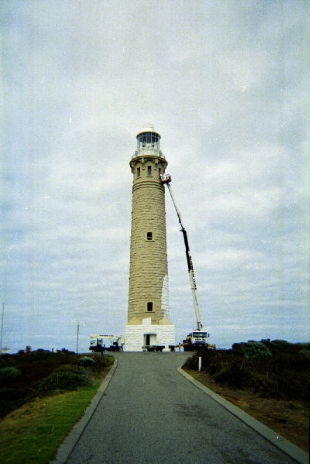
Figure 16. Repainting Cape Leeuwin Lighthouse (© AMSA, 2002)
Access to the Lighthouse
One practical effect of this performance standard is that the operational equipment and structure of the light need to be kept in good repair by regular preventative maintenance and equipment that fails in service is repaired quickly. Routine maintenance and emergency repairs are carried out by AMSA’s maintenance contractor. The contractor needs reliable access to the site for this work, and AMSA officers need access for occasional inspections of the site including auditing the contractor’s performance.
6.5 Proposals for change
Preventative maintenance works are carried out on the lighthouse to maintain its status as a working marine AtoN, and to assist in the site’s conservation.
A list of scheduled preventative maintenance work is identified within the latest available site inspection report. The information provided below was taken from this report:
Maintenance description | Estimated maintenance date |
Cape Leeuwin structure paint | 2022 |
Cape Leeuwin reseal glazing | 2022 |
Cape Leeuwin LED array replacement | 2029 |
6.6 Potential pressures
A significant pressure that harnesses the potential to effect the Commonwealth heritage values of the place would be the obligation to remove or replace original fabric materials from the lightstation owing to unavoidable and irreversible deterioration.
In the case of Cape Leeuwin, the mercury float mechanism found within the lighthouse tower may create a hazardous environment in the event of a spill and the release of mercury vapours. WHS may require in the future to modify this mechanism by removing the mercury which would alter the Commonwealth heritage values identified in Criterion B (Rarity). At the time of preparing this management plan, no plans have been made to modify the mercury float mechanism.
In the event plans are made to modify or remove the mercury float, work will be conducted in line with the heritage considerations and requirements of the EPBC Act..
The increasing amount of tourism identified at Cape Leeuwin harnesses the potential to cause additional wear and tear to the precinct. Impacts of tourism will be monitored.
6.7 Process for decision-making
Processes for decision-making are required in the event of an incident that impacts the heritage values of the site. The following incidents are included due to their likelihood of occurrence at the Cape Leeuwin Lighthouse.
Incident | Procedure |
Major project/maintenance works proposed | - Prepare Heritage Impact Statement on proposed modifications.
- Submit scope of works and Heritage Impact Statement to the Department of Agriculture, Water and the Environment and the Western Australian Heritage Council for review.
|
Damage to lighthouse’s fabric (heritage significance) | - AMSA or selected contractors assess extent of damage.
- Seek heritage advice on restoration of heritage fabric impacted.
- Identify possible loss of heritage value (at both state and Commonwealth level).
- Seek the appropriate approvals for restoration of heritage fabric impacted.
- Implement best practice management of restoration work in keeping with the original character of the place.
- In the case of a loss of heritage value, prepare report for submission.
- Update record-keeping of incident and make available to relevant personnel.
|
Damage to lighthouse’s fabric (no heritage significance) | - AMSA or selected contractors to assess extent of damage.
- Identify possible impact on heritage fabric in any work carried out to restore fabric.
- Implement best practice management of restoration work.
- Update record-keeping of incident and make available to relevant personnel.
|
Light upgrade | - Assess possible loss of heritage value in the event of an upgrade.
- If necessary, seek expert heritage advice on process of upgrade.
- If necessary, seek heritage approvals for the upgrade of light.
- Implement best practice management of light upgrade work.
- Update record-keeping and make available to relevant personnel.
|
Minor modification to lighthouse (such as adding of attachment) | - Assess possible obstruction to light.
- If necessary, seek heritage approvals for minor modification.
- Monitor modification (e.g. attachment) and update record-keeping.
|
Unforeseen discovery of Aboriginal artefacts on-site. | - Immediate stop-work.
- Notify Department of Biodiversity, Conservation and Attractions.
- Delay work on site until artefacts have been appropriately extracted and further investigations carried out in surrounding area.
- Update record-keeping of unforeseen discovery and make available to relevant personnel.
|
Divestment of lighthouse from AMSA | - Transfer control of heritage assets to the Department of Biodiversity, Conservation and Attractions.
- Terminate lease of Cape Leeuwin site with the Department of Biodiversity, Conservation and Attractions.
- Transfer relevant records and historical information held by AMSA to the Department of Biodiversity, Conservation and Attractions.
|

7. Conservation management principles and policies
Policies
Note: The management of sensitive information is not relevant to AMSA’s heritage strategy and therefore bears no relevance in this management plan.
Fabric and setting
Policy 1 – Protect and conserve the significant external and internal fabric of the lightstation, including existing buildings, layout and setting.
AMSA’s main purpose is to facilitate the ongoing operation of the site as a marine AtoN while preserving the site’s heritage values. As part of a heritage monitoring program, Heritage Asset Condition Reports are produced for each site every two years to evaluate the condition of the heritage fabric and values. Routine servicing is also carried out by maintenance contractors. Regular written reports from these visits will be sent to AMSA Asset Management and Preparedness for review and any work requirements identified will be scheduled accordingly. Should for some unforeseen reason the site no longer be viable as a marine AtoN, ownership will be passed to an appropriate state or federal authority to ensure preservation of the heritage assets.
Implementation strategy:
- AtoN Maintenance contractor will continue scheduled periodic maintenance of the lighthouse and marine aids to navigation every 6 months to ensure condition is monitored for early warning of deterioration. Schedule must be approved by AMSA Asset Management and Preparedness.
- AMSA Asset Management and Preparedness to arrange for maintenance to be carried out on the lighthouse as required while continuing to operate as an AMSA marine aids to navigation.
- AMSA Asset Management and Preparedness to arrange for the replacement and upgrading of marine aids to navigation equipment in the lighthouse as required to meet AMSA’s service commitment, in a manner that preserves the original fabric of the lighthouse.
- AMSA Asset Management and Preparedness to maintain information on the heritage fabric of the lighthouse including any and all actions, treatments and inspection outcomes within the heritage fabric register. See section 4.1 for fabric register.
- AMSA Asset Management and Preparedness to conserve all the fabric elements identified as significant in the heritage asset condition report.
- AMSA Asset Management and Preparedness to seek expert materials conservation advice when considering repair, restoration and reconstruction of historic fabric. The relevant local, state and federal heritage approvals must be sought prior to repair, restoration and reconstruction.
- AMSA AtoN Heritage Coordinator to conserve the distinctive character of the lightstation by collecting photographic evidence and historical documentation of the original fabric.
- AtoN Maintenance Contractor to continue scheduled heritage monitoring visits to Cape Leeuwin Lighthouse and review Heritage Asset Condition Reports.
Uses
Policy 2 – Install and operate equipment in the lighthouse, so it continues to function as an effective marine AtoN, in such a way as to impose the least possible harm to the significant fabric.
Cape Leeuwin Lighthouse’s use as a working marine AtoN is of high priority. Carrying out maintenance, including upgrades to AtoN equipment, is necessary to its function and continued marine safety along the WA coast. In the event of the installation or upgrade to AtoN equipment, proper precaution will be taken to ensure the least possible harm is done to significant fabric.
Implementation strategy:
- AtoN Maintenance Contractor to monitor Cape Leeuwin’s AtoN equipment every 6 months and propose maintenance in the instance of necessary installation or removal. Proposed maintenance is to be approved by AMSA Asset Management and Preparedness.
- AMSA to outline all possible risks to significant fabric, external and internal, associated with the installation, removal and operation of equipment.
- AMSA Asset Management and Preparedness to ensure works carried out are those that ensure the least possible harm to significant fabric.
- AMSA Asset Management and Preparedness to seek expert heritage conservation advice on best practice management of the site during installation, removal and operation of equipment where necessary.
Policy 3 – Monitor possible impacts to the site resulting from tourism and control appropriate access to the lighthouse for contractors and visitors.
Cape Leeuwin Lighthouse attracts hundreds of visitors each year. Its location and layout allows relatively easy public access. Although access inside the lighthouse is restricted to authorised personnel, such as contractors and AMSA employees, official tour groups also oversee admittance of tourists from sunrise to sunset. AMSA personnel and contractors require easy access inside the lighthouse precinct and tower for periodical site visits to carry out inspections and routine maintenance. The maintenance of the light holds priority over official tours inside the lighthouse and some delays in the tour guide service may be required during inspections and routine maintenance.
Implementation strategy:
Interpretation
Policy 4 – Accurate and relevant interpretation of the history and significance of the place should be made available to site users/visitors and for offsite external research.
AMSA will continue to make information available through the maintenance of site interpretive signage and its website.
Implementation strategy:
Management
Policy 5 – AMSA will continue to conserve the lighthouse in accordance with Commonwealth and WA State heritage listing requirements.
For works requiring heritage approval, AMSA will obtain permission from any relevant state or federal authorities. Continuous and as-needed conservation works will be undertaken as required.
Implementation strategy:
- Liaise with the Department of Agriculture, Water and the Environment (Heritage Branch), and the Western Australian Heritage Council when proposing work on the site.
- Approval in writing must be granted for any development proposals.
Policy 6 – The cultural significance of the lightstation will be the basis for deciding how to manage it.
The heritage values or cultural significance of the place must be conserved. This heritage management plan includes relevant background information to support this policy (see ‘Section 3 History’).
Implementation strategy:
- Conserve the lightstation to protect its heritage values (cultural significance).
- When possible, strive to maintain the original fabric of the lightstation.
- Use the Burra Charter as the primary guide for treatment of fabric.
- Engage appropriately qualified heritage consultants when making decisions regarding impact on heritage values.
- Assess impacts on the heritage values of the place when considering proposed alterations or adaptations.
Policy 7 – Monitor, review and report the Commonwealth heritage values of the lightstation every five years or sooner if major changes to the lightstation occur.
The Commonwealth heritage values of the lighthouse are to be monitored and reported on a regular basis. A Heritage Asset Condition Report is updated for Cape Leeuwin Lighthouse every two years. The report records historical information, condition, and maintenance requirements for fabric within the lighthouse to ensure a gain and/or loss of heritage value is identified.
Implementation strategy:
- AMSA Asset Management and Preparedness to regularly monitor the lightstation for possible impacts on the identified Commonwealth heritage values.
- AMSA Asset Management and Preparedness to review the current Commonwealth heritage values at least once every five years and assess any gain or loss of values.
- This review must be undertaken in the event of any major alterations to the lightstation.
- AMSA Asset Management and Preparedness to report any changes to the Commonwealth heritage values of the lightstation to the Department of Agriculture, Water and the Environment (Heritage Branch).
- AMSA Asset Management and Preparedness to update AMSA’s heritage strategy and this plan to reflect any changes identified.
- AMSA AtoN Maintenance Contractor to review and update Heritage Asset Condition Report biennially.
Policy 8 – Maintain historical, management and maintenance records within AMSA and make available these records.
As part of the proper process for managing change in significant places, the Burra Charter points out the importance of making records before any change, and advocates placing records in a permanent archive and making them available where this is appropriate. AMSA’s collection of records, which include documents pertaining to heritage intervention, management and maintenance, are subject to this process. Heritage Asset Condition Reports are routinely generated for each heritage lighthouse and stored in AMSA’s record-keeping system. AMSA will continue to practice such processes via their records management systems (RMS).
Implementation strategy:
- AMSA to maintain, review and update records through existing AMSA RMS as required.
- AMSA to ensure records are made available to the relevant personnel and parties as required.
Policy 9 – Provide appropriate training and resources to all relevant AMSA staff, contractors and licensees.
In order to ensure best practice management of AMSA-operated lighthouses, all staff, contractors and licensees are required to have access to the appropriate training and resources in order to provide best practice conservation of the site.
Implementation strategy:
- Provide staff personnel involved with the management and maintenance of Cape Leeuwin Lighthouse access to up-to-date versions of the AMSA heritage strategy, heritage management plans and fabric registers.
- When funds are made available, AMSA Asset Management and Preparedness staff and contractors will undertake relevant training to ensure comprehension of the Commonwealth heritage and EPBC Act statutory requirements.
- AMSA representatives will attend Commonwealth-run heritage workshops, programs and conferences for up-to-date information on statutory requirements and best-practice management of sites of national and state heritage significance.
- All current and incoming tour guides operating within AMSA lighthouses will be required to take the lighthouse tour guide safety induction e-learning module once every two years to stay informed on heritage values, visitor safety and lighthouse duty-of-care for the site’s heritage values.
Policy 10 – Use contractors and service providers with appropriate experience.
AMSA is to ensure parties carrying out work have appropriate knowledge and use effective methods to ensure conservation of the lighthouse.
Implementation strategy:
- Engage staff and contractors with the relevant experience and expertise concerning conservation of the lightstation.
- Develop and provide the appropriate training on heritage conservation matters for AMSA Asset Management and Preparedness staff and other relevant parties who hold responsibility for heritage management.
Policy 11 – Seek heritage advice and apply best heritage practice.
AMSA will continue to use in-house heritage expertise, external consultancy, or a combination of both as required in order to successfully apply best heritage practice. Should in-house heritage expertise be limited in responding to a requirement, external heritage expertise will be engaged to address the issue.
Implementation strategy:
- Apply in-house heritage expertise when required.
- Use tools such as the Burra Charter and Working Together: Managing Commonwealth Heritage Places[xxxvii] to measure the likely impact of proposals.
- Seek external heritage expertise in the event of limited in-house capability.
Policy 12 – Appropriate protocol in the event of unforeseen discoveries or disturbances of heritage within the AMSA site.
AMSA’s scope of work rarely involves excavation. Should such work need be undertaken, AMSA will implement a suitable discovery plan and seek advice from suitably qualified personnel as required. In the event of any unforeseen discovery or disturbance of heritage-related items on the AMSA site, notification to the appropriate organisation will occur in accordance with the conditions of the discovery plan. This plan will also be updated accordingly.
Note: In most cases, AMSA’s leases are limited to the immediate vicinity of the lighthouse and therefore this scenario is not anticipated as a likely occurrence.
Implementation strategy:
- Consult Department of Biodiversity, Conservation and Attractions in the event of unforeseen discoveries/disturbances.
- Seek appropriate heritage advice and apply best practice in the event of unforeseen discoveries/disturbances.
- Comply with lease conditions in the event of discovery or disturbance.
Policy 13 – Make this heritage management plan available to all persons involved in decision-making on the management of the lighthouse and its setting.
The plan will be made available to all personnel intrinsic to management of the lighthouse and its setting, for example AMSA maintenance contractors, staff and other relevant parties.
Implementation strategy:
- Provide links to this plan via the AMSA publicly accessible website.
- Provide copies to all relevant personnel and parties.
Future developments
Policy 14 – Adaptation of the place using methods or processes that minimise impact on heritage values and significance in accordance with the Burra Charter principles.
It is likely that over time the lighthouse will house new equipment as technology changes and improves. The Burra Charter principles will be used as the basis for decision-making.
Implementation strategy:
- Assess the likely impacts of changes on the heritage values and significance of the place.
- Preserve the original fabric of the place and do only what is necessary for the continued use and care of the place.
- Engage expert heritage advice and use the Burra Charter in adapting the place.
Policy 15 – When required, engage with adjacent landowners to maintain an appropriate setting for the lighthouse in its visual and natural context.
Any changes to the surrounding land, or AMSA leased area, requires careful consideration. AMSA will liaise with all adjacent landowners in the event of any proposed changes that may affect the setting and attempt to influence a positive outcome.
Implementation strategy:
- AMSA Asset Management and Preparedness to engage with adjacent landowners through consultation when changes are proposed regarding the wider visual and natural context.
- Consultations will take the form of online correspondence where in-person engagement is not possible.
Policy 16 – In the event of adaptive re-use or divestment (instance(s) which would no longer place the lighthouse under AMSA control), AMSA will strive to ensure the Commonwealth and WA State heritage values of the site are recognised and preserved in accordance with s 341ZE of the EPBC Act.
In the event Cape Leeuwin Lighthouse is no longer identified as a working AtoN, AMSA will withdraw its standing as lessee and hand over all authority to the lessor. This process must be conducted in line with section 341ZE of the EPBC Act.
Implementation strategy:
- AMSA will negotiate with lessor to have site lease terminated.
- All available heritage information within AMSA’s collection, including this heritage management plan, will be shared with the relevant parties to ensure the Commonwealth and WA State heritage values of the site are recognised and preserved.
Community Involvement
Policy 17 – Consult with Aboriginal and community stakeholders in the preparation of the management plan.
AMSA will give community and Indigenous groups, as well as the general public, an opportunity to review and comment on this management plan through a public consultation process.
Implementation strategy:
- AMSA Asset Management and Preparedness to undertake community consultation when preparing the heritage management plan in accordance with EPBC Regulations, including advertisement of the plan in a national newspaper for a period of 20 working days.
- Consultations will take the form of online correspondence where in-person engagement is not possible. Feedback received during consultation to be included in the plan.
- Seek advice from any relevant Indigenous communities and refer to Engage Early—Guidance for proponents on best practice Indigenous engagement for environmental assessments under the Environment Protection and Biodiversity Conservation Act 1999 (EPBC Act).[xxxviii] to guide consultations.
Review
Policy 18 – Review this plan within five years of its adoption or sooner if major changes are needed.
This plan will be reviewed every five years. This review should:
- assess the content of the plan.
- determine its effectiveness in protecting the identified heritage values.
- provide any necessary recommendations for updating or re-writing of the plan. If major changes occur at the site in the interim, this plan will be reviewed and updated earlier than the specified five years.
Implementation strategy:
- Review this heritage management plan at least five years after its adoption.
- Review and update this heritage management plan in the event of a major change to the lightstation.
- Submit revised plan for approval.

8. Policy implementation plan
8.1 Plan and schedule
Key Issue | Management action/task | Policies | Responsibility | Priority | Timeframe |
Conservation and preservation | Conserve the lighthouse. | 1, 2, 3, 5, 6, 10, 11, 14 | AMSA, Asset Management and Preparedness | High | On-going |
Review the heritage management plan every five years. | 18 | AMSA, AtoN Heritage Coordinator | Medium | 2027 (5 years from registration) |
Make this plan available to all relevant personnel. | 7, 13 | AMSA, AtoN Heritage Coordinator | High | Ongoing |
Liaison dealings | If applicable, ensure communication is maintained with adjacent landowners. | 15 | AMSA, Asset Management and Preparedness | Medium | As required |
Consult with Indigenous and community stakeholders in preparing the management plan. | 17 | AMSA, AtoN Heritage Coordinator | Medium | As required |
Heritage values | Review the Commonwealth heritage values every five years. | 7 | AMSA, AtoN Heritage Coordinator | High | 2027 |
Consider heritage values when proposing new planning and/or developments. | 5, 6, 7, 14 | AMSA, AtoN Heritage Coordinator and Project Managers | High | Ongoing |
Ensure process of re-use or divestment of the site recognises and preserves heritage values. | 16 | AMSA, AtoN Heritage Coordinator | High | As required |
Staff and community awareness | Conduct heritage monitoring site visit and review Heritage Asset Condition Report every two years. | 1, 7 | AMSA, AtoN Heritage Coordinator | High | Once every two years (ongoing) |
Staff and community awareness | Provide relevant training and awareness for management personnel (contractors and site-users). | 9 | AMSA, Asset Management and Preparedness | High | As required |
Record-keeping/ access | Ensure the availability of accurate and relevant information on the history and significance of the lightstation for site-users and visitors. | 4 | AMSA, AtoN Heritage Coordinator | Medium | Ongoing |
Record-keeping/access | Maintain adequate record-keeping of historical, management and maintenance documents. Make these records available. | 8 | AMSA, Asset Management and Preparedness | High | Ongoing |
Expert heritage advice | Ensure knowledge and advice of heritage experts is used. | 10, 11 | AMSA, Asset Management and Preparedness | Medium | As required |
Lighthouse maintenance | Schedule periodic maintenance. | 1 | AMSA, Asset Management and Preparedness | High | Ongoing (reoccurring once every 6 months) |
Lightstation access | The implementation of unforeseen discovery or disturbance processes in the event of an accidental discovery. | 12 | AMSA, Asset Management and Preparedness | Medium | As required |
| | | | | | |
8.2 Monitoring and reporting
As stipulated by Schedule 7A of the EPBC Regulations, the outlined implementation plan and associated policies listed above are required to be monitored and updated accordingly. The below review process timetable will be adhered to over the next five years:
Timeframe | Review step | Responsibility |
2025 | Plan’s half-life internal review: - Assess strengths and weaknesses of existing plan
- Address any known impact to the lighthouse’s heritage values
| AMSA, Asset Management and Preparedness |
2027 | Plan’s full-life review: - Consult with internal and external stakeholders on existing plan
- Prepare updated draft plan and consult with the Heritage Branch
- Submit reviewed plan to the Minister
| AMSA, Asset Management and Preparedness |
Other key actions in monitoring and reporting include:
- ensuring the implementation plan and policies are readily available for all relevant personnel
- delegating AMSA staff to periodically check the implementation plan is up-to-date and being utilised appropriately by the relevant personnel
- ensuring the timeframes outlined within the plan are followed
- delegating AMSA Response staff to review this plan and the associated policies at least every five years and determine whether its contents are relevant and effective in terms of continuing to conserve the place.

Appendix 1. Glossary of heritage conservation terms
The Burra Charter, from its first (1979) version and its (2013) version, defined a set of terms that have since been widely adopted in Australian heritage conservation practice.
Where the following terms are used in their heritage management plan, the particular meanings defined in the charter are intended. The definitions are quoted from Article 1 of The Burra Charter[xxxix].
A
Adaptation means modifying a place to suit the existing use or a proposed use.
Associations mean the special connections that exist between people and a place.
C
Compatible use means a use which respects the cultural significance of a place. Such a use involves no, or minimal, impact on cultural significance.
Conservation means all the processes of looking after a place so as to retain its cultural significance.
Cultural significance means aesthetic, historic, scientific, social or spiritual value for past, present or future generations. Cultural significance is embodied in the place itself, its fabric, setting, use, associations, meanings, records, related places and related objects. Places may have a range of values for different individuals or groups.
F
Fabric means all the physical material of the place including components, fixtures, contents, and objects.
I
Interpretation means all the ways of presenting the cultural significance of a place.
M
Maintenance means the continuous protective care of a place, and its setting. Maintenance is to be distinguished from repair which involves restoration or reconstruction.
Meanings denote what a place signifies, indicates, evokes or expresses to.
P
Place means a geographically defined area. It may include elements, objects, spaces and view. Place may have tangible and intangible dimensions.
Preservation means maintaining a place in its existing state and retarding deterioration.
R
Reconstruction means returning a place to a known earlier state and is distinguished from restoration by the introduction of new material.
Related object means an object that contributes to the cultural significance of a place but is not at the place.
Related place means a place that contributes to the cultural significance of another place.
Restoration means returning a place to a known earlier state by removing accretions or by reassembling existing elements without the introduction of new material.
S
Setting means the immediate and extended environment of a place that is part of or contributes to its cultural significance and distinctive character.
U
Use means the functions of a place, including the activities and traditional and customary practices that may occur at the place or are dependant on the place.
Appendix 2. Glossary of historic lighthouse terms relevant to Cape Leeuwin Lighthouse
A
Apron paving The concrete paving surrounding the base of the lighthouse tower.
Astragal The bars which support the glazing of a lantern. They may also support the roof. Simply a framing member between the glazing bars in the lantern glazing. In its true meaning an astragal is a moulding that has a rounded profile. In lanterns this is almost never the case.
B
Balcony A walk way around the outside of the lantern, used for maintenance and, when lighthouses were manned, for observing ships. Principal parts are the balcony floor and the balcony balustrade. (Synonym: gallery deck).
Balcony floor Floor of the balcony. Cape Leeuwin Lighthouse balcony floor is constructed of stone slab.
Balcony balustrade A handrail together with its supports. The supports are called balusters. A railing or wall on the outer perimeter of a balcony, to prevent people from falling off the balcony. Generally made of metal stanchions and rails – the Cape Leeuwin balustrade is constructed of cast iron balusters with four iron pipe rails with aluminium mesh grille and extruded aluminium frame.
C
Chance Bros English manufacturer of optical apparatus, lanterns, cast iron stairs, cast iron towers, and other lighthouse components. The Chance family established a glass-making business in Smethwick, England in 1824 and is often described as ‘near Birmingham’. The business was absorbed into the Pilkington group of companies in 1951 and now ceases to exist.
Character Pattern of flashes of light emitted by a lighthouse, designed to identify that particular lighthouse.
E
External catwalk A landing around the external face of the tower complete with hand rail.
G
Glazing bar Rebated bars of metal which retain the panes of glass in a window. Often consist of vertical angled steel members joining between done support ring and murette. Often the glazing bar has a tenon that matches a mortise in the murette. Astragals are arranged helically. Helical and trapezoidal glazing bars were used where a fixed light was in use (flashing or non-rotating) as vertical bars cut off portions of the light. In comparison, a helical bar design crosses the light source at an angle, obscuring part of it.
I
Incandescent kerosene
A light fuel once utilised by lighthouses to ignite and fuel the lantern. Cape Leeuwin used kerosene to fuel its lantern before its introduction to electricity.
Intermediate floors Levels found mid-way up a building. Cape Leeuwin’s intermediate floors are constructed of iron checker plate.
Internal catwalk An open landing inside the tower complete with handrail.
L
Lantern The glazed enclosure at the top of a lighthouse, which surrounds and protects the optical apparatus. It contains the optical apparatus, made up of the lantern roof, lantern glazing and murette sections.
Lantern floor The level in a lighthouse at which the lantern is installed, and by which access may be gained to the optical system and to the inside and outside of the lantern glazing. The lantern floor is generally at or near the same level as the catwalk and can be made from steel, concrete, or timber.
Lantern glazing The middle section of the lantern, circular or polygonal in plan, between the lantern roof above and the lantern base below, made up of glass panes held in a framework of glazing bars. On the landward side there may be blank panels in place of glass, or other opaque construction. Types of lantern glazing include: flat and curved trapezoidal panes and curved diamond/triangular panes. Cape Leeuwin uses curved rectangular panes.
Lantern roof Roof of the lantern. Usually made of copper sheeting over a framework of rafters.
Lens assembly A transparent optically refracting element of glass. The surface is usually spherical in form.
Light source Electric lamps and LEDs now illuminate most lighthouses.
Lighthouse The principal structure of a lightstation, generally made up of a lantern, balcony and tower.
Lightstation A precinct containing a lighthouse structure and other related buildings, for example. Keepers’ cottages, store room and signal house.
M
Mercury float mechanism Mechanism whereby the base of a lighthouse’s lens is submerged in a mercury-filled bath and is then rotated without friction.
O
Oil store A building or similar structure built for a specific purpose. Cape Leeuwin’s oil store is located around the base of the tower.
Optical apparatus Equipment to provide, direct and control the light emitted by the light source. Comprised of light source, lens assembly, and pedestal.
Order A shorthand expression of the size of an optical apparatus or lantern. At the time the system of orders was established, when kerosene burners were used, longer range lights needed larger burners, and larger burners needed lens assemblies of longer focal length to ensure a sharply defined beam. Thus in turn, the lantern rooms were required to be larger to house these lens assemblies. AMSA’s historic lantern rooms range from 1st to 4th order.
P
Pane An individual piece of glass in the lantern glazing. Often original supply was 3/8” thick polished plate but in later years this changed to 5/16”.
Pedestal Part of the optical apparatus, consisting of a metal column or base standing on the balcony floor inside the lantern and supporting the lens assembly and light source. Some later Chance documentation (such as their tariffs 1908) also refer to the lantern base as a pedestal.
T
Tower Structure to support the lantern at a sufficient height above the ground. The most common types are the masonry tower, timber-framed tower, cast iron tower, and lattice tower.
Appendix 3. Cape Leeuwin light details
Cape Leeuwin Main Light (AN350)
IALA AVAILABILITY CATEGORY: | 1 |
PERFORMANCE CRITERIA (AVAILABILITY): | 99.8% |
POSITION: | Latitude: 34° 22.4900’ S Longitude: 115° 08.1800’ E Datum: WGS84 |
BA LIST OF LIGHTS: | Q 1794 |
DAYMARK: | White stone tower and white lantern room |
HEIGHT OF DAYMARK: | 39 meters |
CHARACTER: | Flashing: 7.50 secs Flash: 0.04 secs Eclipse: 7.46 secs |
COLOUR OF LIGHT | White |
ARC OF VISIBILITY: (True bearing seaward) | 261° – 141° (240°) (Obscured elsewhere) |
LENS: | Chance Bros. 12’0”dia. with curved glazings |
LIGHTSOURCE: | Lamp: LED Array Sealite SL-LED-324-W |
LANTERN: | Chance Bros. 12’0” dia. with curved glazings |
ELEVATION: | 56 metres |
RANGE: | Nominal: 25 Nautical miles Geographical: 19.7 Nautical miles |
Appendix 4. Table demonstrating compliance with the EPBC Regulations
Environment Protection and Biodiversity Conservation Regulations 2000 (Cth) Schedule 7A – Management Plans for Commonwealth Heritage Places
Legislation | Satisfied within |
A management plan must: |
(a) Establish objectives for the identification, protection, conservation, presentation and transmission of the Commonwealth Heritage values of the place; and | Section 1 – Introduction |
(b) Provide a management framework that includes reference to any statutory requirements and agency mechanisms for the protection of the Commonwealth heritage values of the place; and | Section 1 – Introduction |
(c) Provide a comprehensive description of the place, including information about its location, physical features, condition, historical context and current uses; and | Section 2 – Cape Leeuwin Lightstation site Section 3 – History Section 4 – Fabric |
(d) Provide a description of the Commonwealth heritage values and any other heritage values of the place; and | Section 5 – Heritage significance |
(e) Describe the condition of the Commonwealth heritage values of the place; and | Section 5 – Heritage significance |
(f) Describe the method used to assess the Commonwealth Heritage values of the place; and | Section 5 – Heritage significance |
(g) Describe the current management requirements and goals including proposals for change and any potential pressures on the Commonwealth heritage values of the place; and | Section 6 – Opportunities and constraints |
(h) Have policies to manage the Commonwealth heritage values of a place, and include in those policies, guidance in relation to the following: |
i. The management and conservation processes to be used; | Section 7 – Conservation management principles and policies (Policy 1, 2, 3, 5, 6, 10, 11, 14) |
ii. The access and security arrangements, including access to the area for indigenous people to maintain cultural traditions; | Section 7 – Conservation management principles and policies (Policy 3) |
iii. The stakeholder and community consultation and liaison arrangements; | Section 7 – Conservation management principles and policies (Policy 15, 17) |
iv. The policies and protocols to ensure that indigenous people participate in the management process; | Section 7 – Conservation management principles and policies (Policy 17) |
v. The protocols for the management of sensitive information; | N/A |
vi. The planning and management of works, development, adaptive reuse and property divestment proposals; | Section 7 – Conservation management principles and policies (Policy 16) |
vii. How unforeseen discoveries or disturbances of heritage are to be managed; | Section 7 – Conservation management principles and policies (Policy 12) |
viii. How, and under what circumstances, heritage advice is to be obtained; | Section 7 – Conservation management principles and policies (Policy 10, 11) |
ix. How the condition of Commonwealth heritage values is to be monitored and reported; | Section 7 – Conservation management principles and policies (Policy 5, 6, 7, 14) |
x. How records of intervention and maintenance of a heritage places register are kept; | Section 7 – Conservation management principles and policies (Policy 8, 13) |
xi. The research, training and resources needed to improve management; | Section 7 – Conservation management principles and policies (Policy 9) |
xii. How heritage values are to be interpreted and promoted; and | Section 7 – Conservation management policies (Policy 4) |
(i) Include an implementation plan; and | Section 8 – Heritage implementation plan |
(j) Show how the implementation of policies will be monitored; and | Section 8 – Heritage implementation plan |
(k) Show how the management plan will be reviewed. | Section 7 – Conservation management principles and policies (Policy 18) Section 8 – Heritage Implementation Plan |
Reference List
AMSA, AMSA Heritage strategy 2022-2025. 2022, https://www.amsa.gov.au/amsa-heritage-strategy-2022-2025
AMSA, Annual Report 2020-21. https://www.amsa.gov.au/about/corporate-publications/annual-report-2020-21
AMSA Interactive heritage lighthouse map, Google, 2021, https://www.operations.amsa.gov.au/lighthouses/?_ga=2.236400321.1108408984.1535497123-1996646104.1535497123
Ask First: a guide to respecting Indigenous heritage places and values. Australian Heritage Commission, 2002.
Australian Heritage Database, Cape Leeuwin, Leeuwin Rd, Cape Leeuwin via Augusta, WA, Australia. Department of Agriculture, Water and the Environment, https://www.environment.gov.au/cgi-bin/ahdb/search.pl?mode=place_detail;search=state%3DWA%3Blist_code%3DCHL%3Blegal_status%3D35%3Bkeyword_PD%3D0%3Bkeyword_SS%3D0%3Bkeyword_PH%3D0;place_id=105416
‘The Burra Charter: The Australia ICOMOS Charter for Places of Cultural Significance’. Australia ICOMOS, 2013.
Gifford. Lord Gifford to F. T. Hassell. April 14, 1881. In Correspondence relating to the proposed erection of a lighthouse on Cape Leeuwin. Perth: Government Printer, 1881.
Hassell, F. T. F. T. Hassell to Lord Gifford. July 22, 1881. In Correspondence relating to the proposed erection of a lighthouse on Cape Leeuwin. Perth: Government Printer, 1881.
Marquis-Kyle, P., Heritage Lighthouse Report: Cape Leeuwin. AMSG, 2007.
National Archives of Australia: Australian Maritime Safety Authority; K1372, Lighthouse and lighthouse sites plans and drawings, 1915-; WN/01/014/01, Rottnest Island Lighthouse (new) - drawing no. 1 (PWD 2960), 1884-1885.
National Archives of Australia: Australian Maritime Safety Authority; A9568, Drawings and Plans of Lighthouses and of Associated Buildings and Equipment, 1833-1968; 7/10/6, Cape Leeuwin Lighthouse: Elevation of Lenses, 1915.
National Archives of Australia: Australian Maritime Safety Authority; K1372, Lighthouse and lighthouse sites plans and drawings, 1915-; WN/01/036/01, Cape Leeuwin Lighthouse - section line A.B, 1894-1895.
Laurence, S., Ron Danvers, and Ben Woodroffe, ‘Conservation Plan: Cape Leeuwin Lightstation Western Australia., Danvers Architects, 1992.
Reid, G., ‘From Dusk till Dawn: A history of Australian lighthouses’. Aus: Macmillan Co., 1988.
Serle, G., ‘First Order: Australia’s Highway of Lighthouses’. Glenelg, SA: Seaside Lights, 2013.
Tomlinson, C., ‘Tomlinson’s Cyclopaedia of Useful Arts’. 1854.
Western Australia Heritage Council, Cape Leeuwin Lighthouse and Quarters. State Heritage Office, http://inherit.stateheritage.wa.gov.au/Public/Inventory/Details/3b3f0b60-9fee-4a80-b775-d84b4923a2ef
Wither, G. George Withers to Lord Gifford. July 5, 1881. In Correspondence relating to the proposed erection of a lighthouse on Cape Leeuwin. Perth: Government Printer, 1881.
Working Together Managing Commonwealth Heritage Places: a guide for Commonwealth agencies. Commonwealth of Australia, 2019.
‘The Cape Leeuwin Lighthouse,’ The Coolgardie Miner. Dec 16, 1895, https://trove.nla.gov.au/newspaper/article/216665663
‘The Cape Leeuwin Lighthouse: Laying the foundation stone,’ The West Australian. Dec 14, 1895, https://trove.nla.gov.au/newspaper/article/4541579
‘Local Intelligence,’ The Perth Gazette and Independent Journal of Politics and News. Jun 15, 1849, https://trove.nla.gov.au/newspaper/article/3170737
‘Loss of the Hokitika,’ The Argus. Dec 21, 1872, https://trove.nla.gov.au/newspaper/article/5844853
‘Luckner’s boyhood memories,’ The Daily Telegraph. Feb 23, 1938, https://trove.nla.gov.au/newspaper/article/247391209
‘Notice to Mariners: The Cape Leeuwin lighthouse,’ Newcastle Morning Herald and Miners’ Advocate. Dec 10, 1896, https://trove.nla.gov.au/newspaper/article/135774881
‘West Australia,’ Weekly Examiner. Sept 21, 1878, https://trove.nla.gov.au/newspaper/article/233682743
Endnotes
[ii] The Burra Charter, Australia ICOMOS, (2013).
[iv] Conservation Commission, Leeuwin-Naturaliste capes area parks and reserves, (2015).
[vii] Garry Searle, First Order: Australia’s Highway of Lighthouses, (SA: Seaside Lights, 2013), 34.
[viii] Laurence, S., Ron Danvers, and Ben Woodroffe, Conservation Management Plan: Cape Leeuwin Lightstation Western Australia, Danvers Architect, (1992), pg. 8.
[ix] Laurence et al., Conservation Management Plan, (1992), pg. 8.
[x] Lord Gifford to F. T. Hassell, April 14, 1881, in Correspondence relating to the proposed erection of a lighthouse on Cape Leeuwin (Perth: Government, 1881).
[xi] F. T. Hassell to Lord Gifford, July 22, 1881, in Correspondence relating to the proposed erection of a lighthouse on Cape Leeuwin (Perth: Government Printer, 1881).
[xiii] Laurence et al., Conservation Management Plan, (1992), pg. 8.
[xvi] George Withers to Lord Gifford, July 5, 1881, in Correspondence relating to the proposed erection of a lighthouse on Cape Leeuwin (Perth: Government Printer, 1881).
[xvii] Laurence et al., Conservation Management Plan, (1992), pg. 9.
[xviii] Laurence et al., Conservation Management Plan, (1992), pg. 10.
[xix] Laurence et al., Conservation Management Plan, (1992), pg. 10.
[xxiii] Cape Leeuwin was one of the first lighthouses in Australia to be installed with a rotating mercury bath. Its installation enabled the lens to revolve at a faster rate – once every ten seconds as opposed to once every 2 minutes.
[xxiv] Serle, G. First Order (2013), pg. 307.
[xxv] Brewis, C.R.W., Reports on the lighting of the coast of Australia: Lighting of the west coast of Australia King George Sound to Cambridge Gulf, (1913), pg. 16.
[xxxii] Laurence et al., Conservation Management Plan, (1992), pg. 14.
[xxxiii] Brewis, C.R.W., Reports on the lighting of the coast of Australia: Lighting of the west coast of Australia King George Sound to Cambridge Gulf, (1913), pg. 16.
[xxxiv] Heritage approvals are essential in undertaking archaeological excavations/investigations within the site.
[xxxvii] Commonwealth of Australia, Working Together Managing Commonwealth Heritage Places: a guide for Commonwealth agencies (2019).
[xxxviii] Commonwealth of Australia, Engage Early—Guidance for proponents on best practice Indigenous engagement for environmental assessments under the Environment Protection and Biodiversity Conservation Act 1999 (EPBC Act) (2016).
[xxxix] The Burra Charter, Australia ICOMOS, (2013).






















































































































